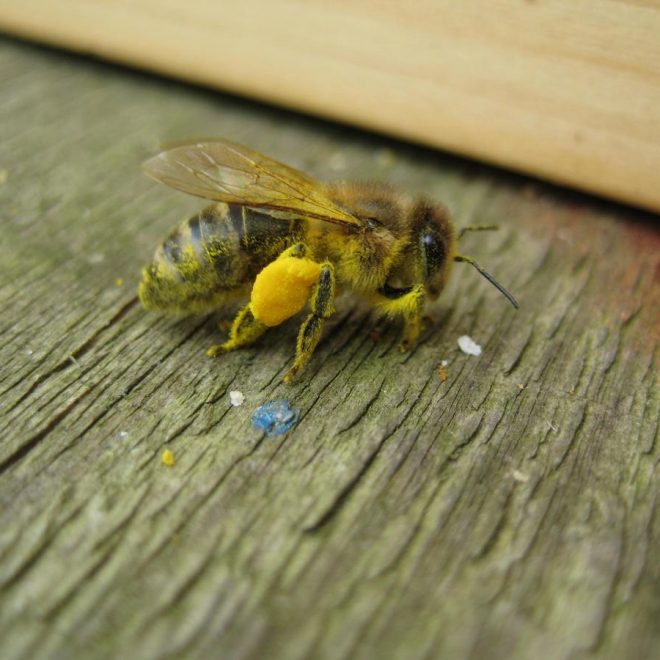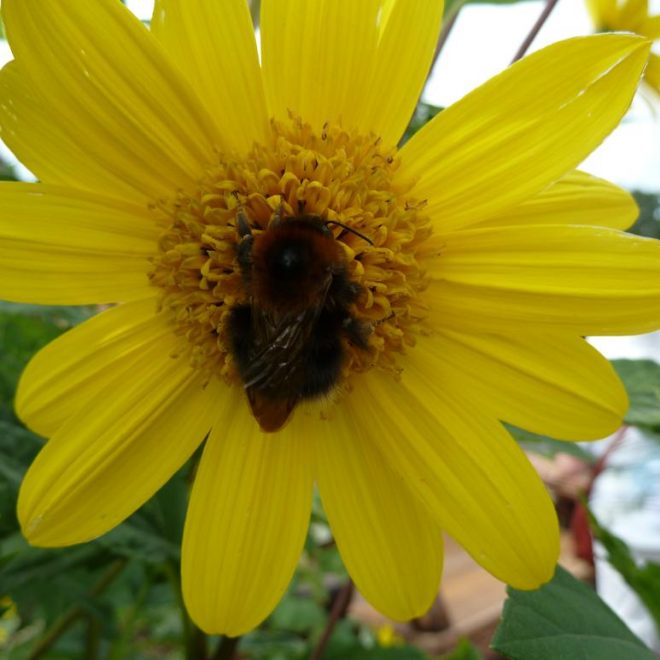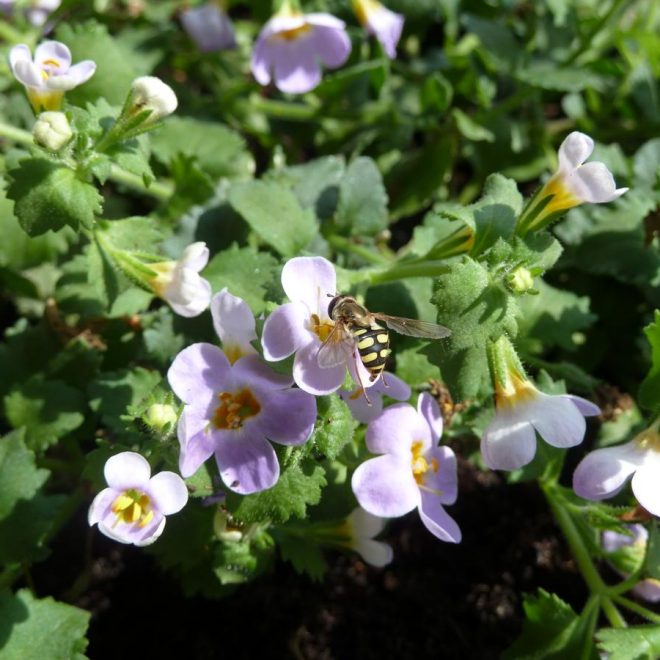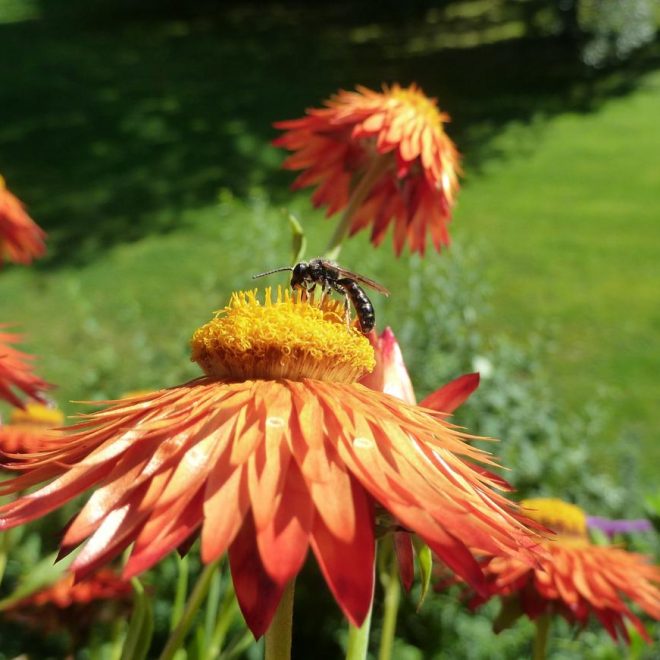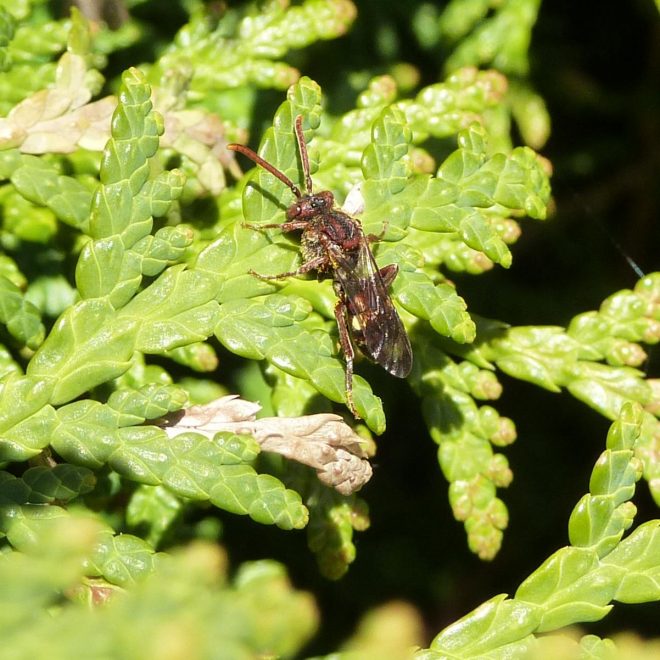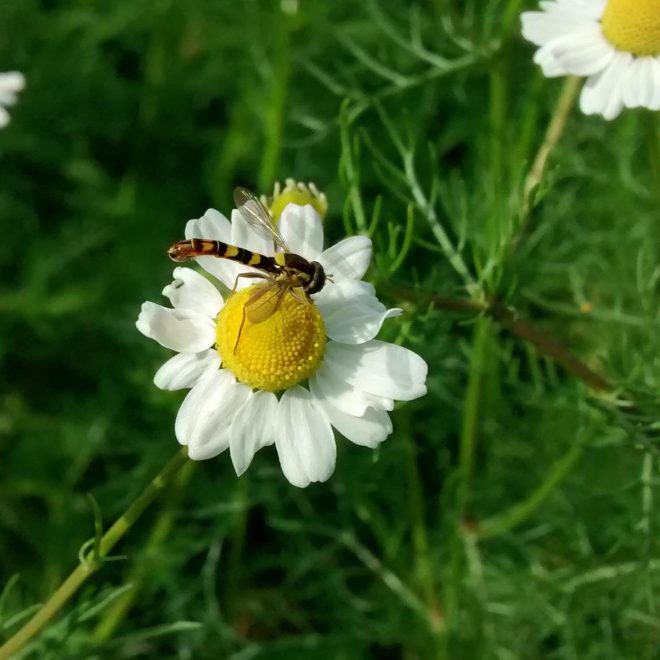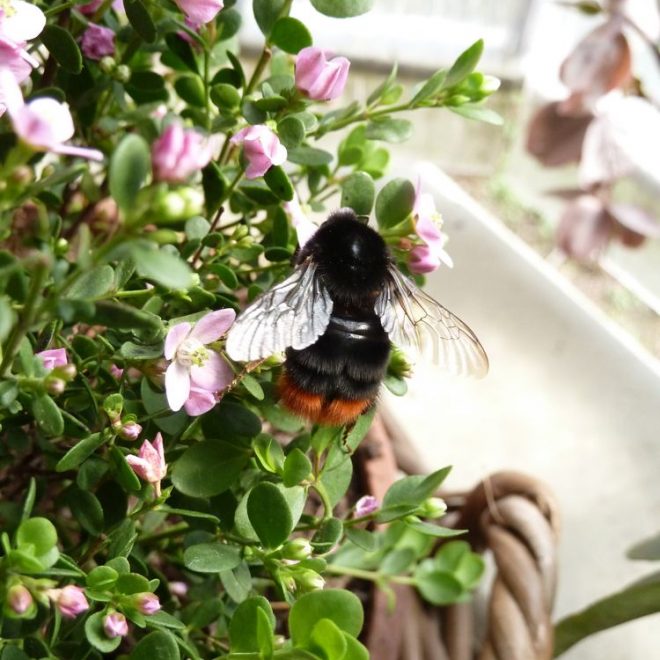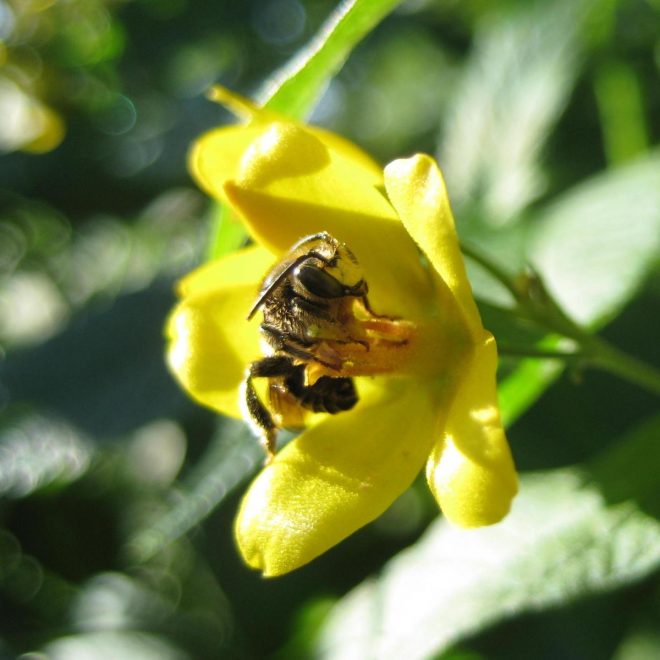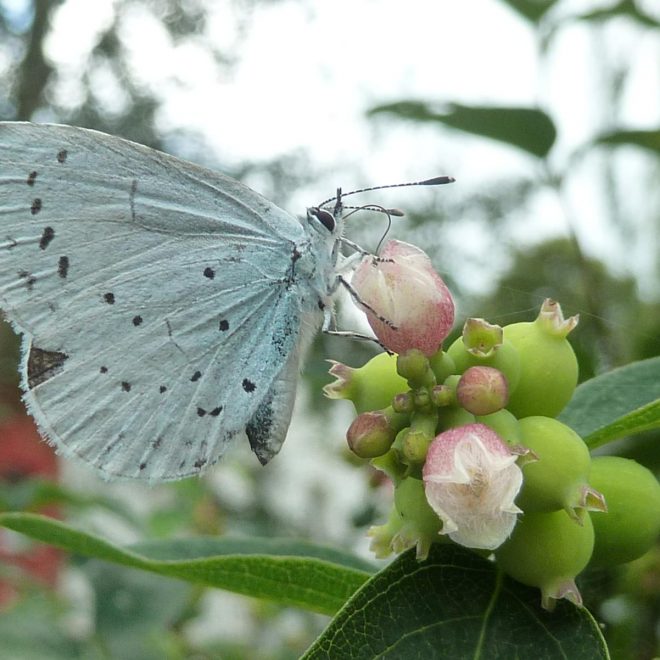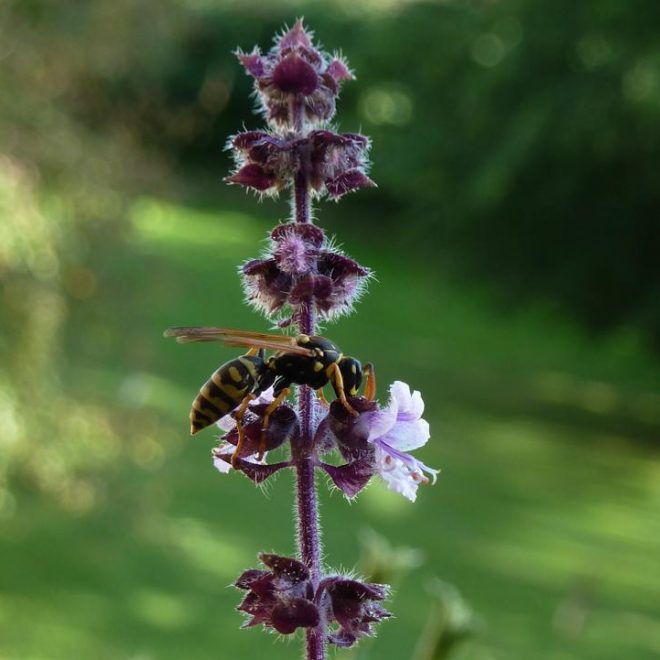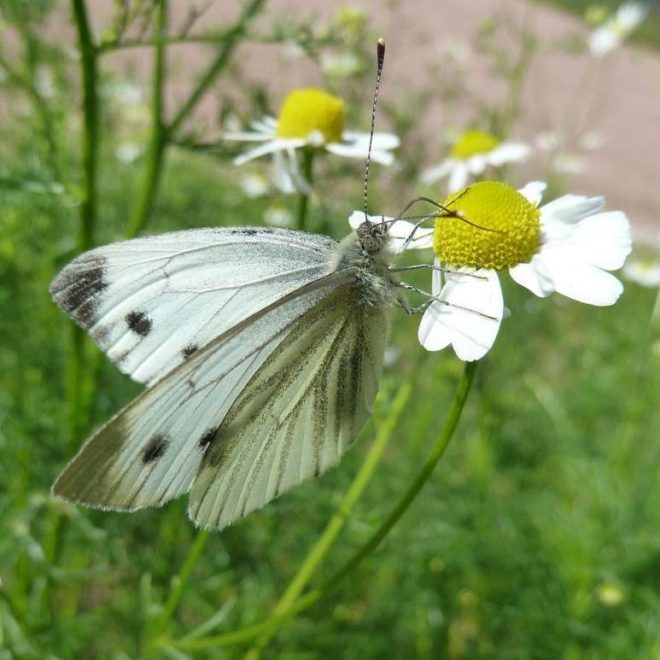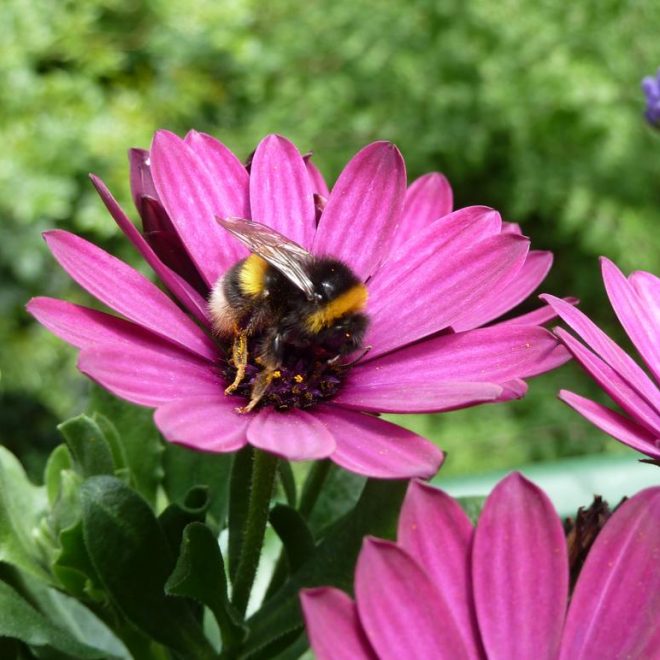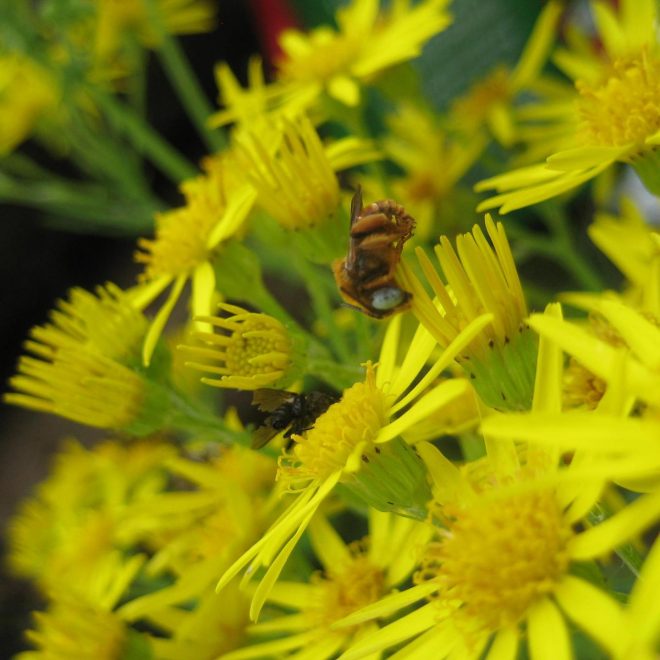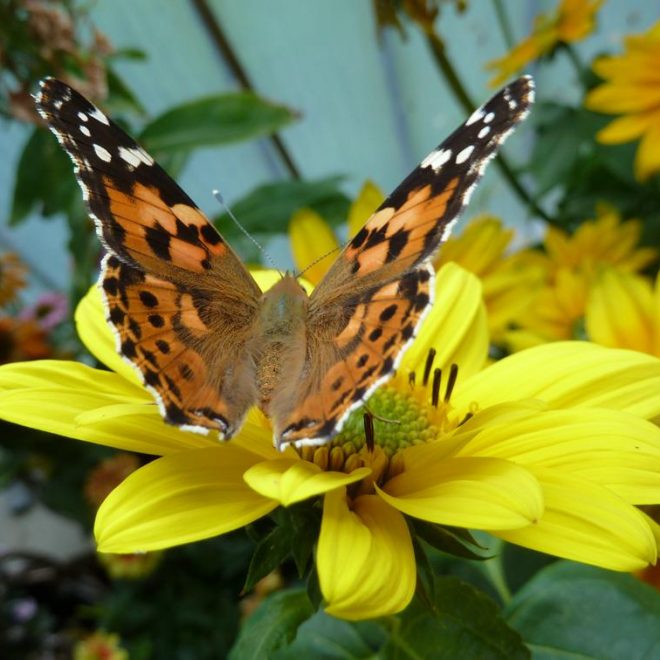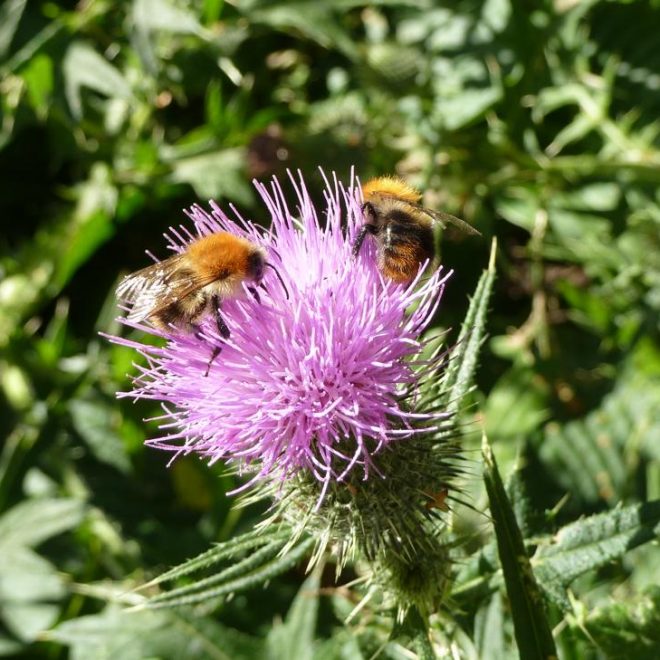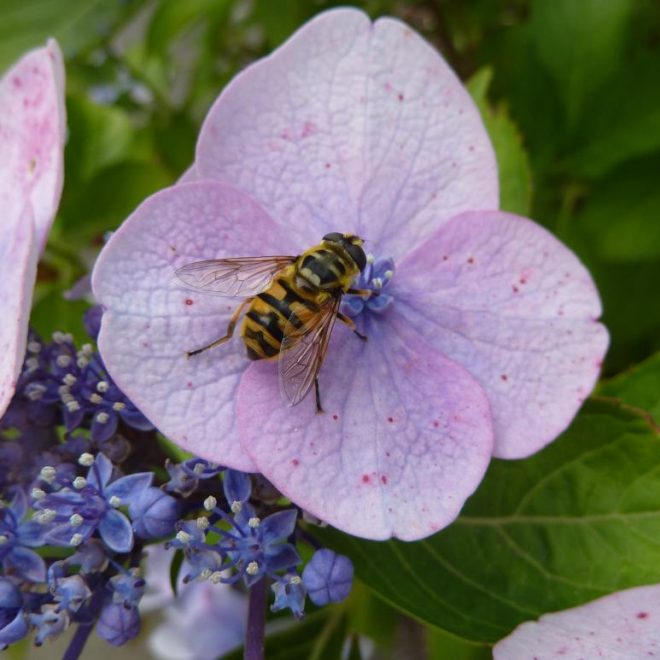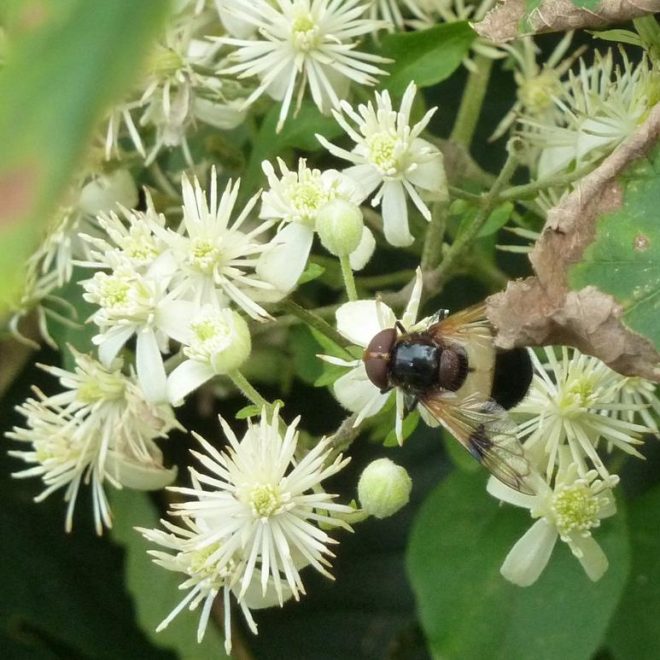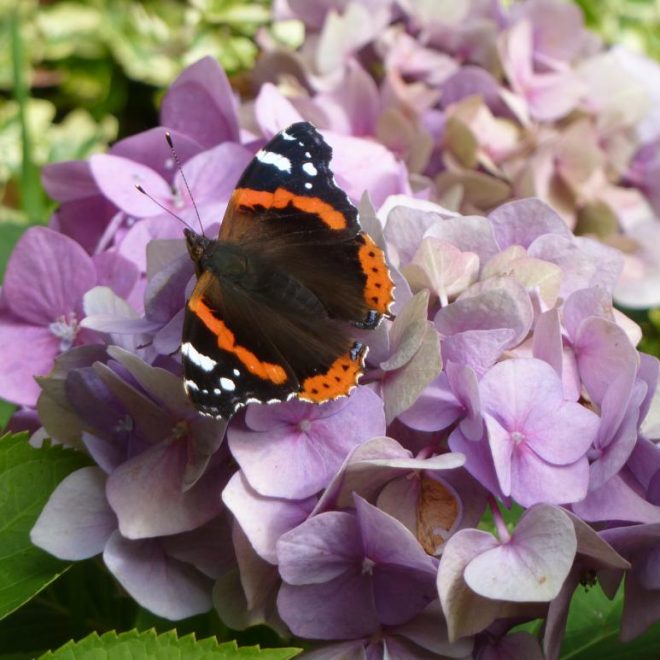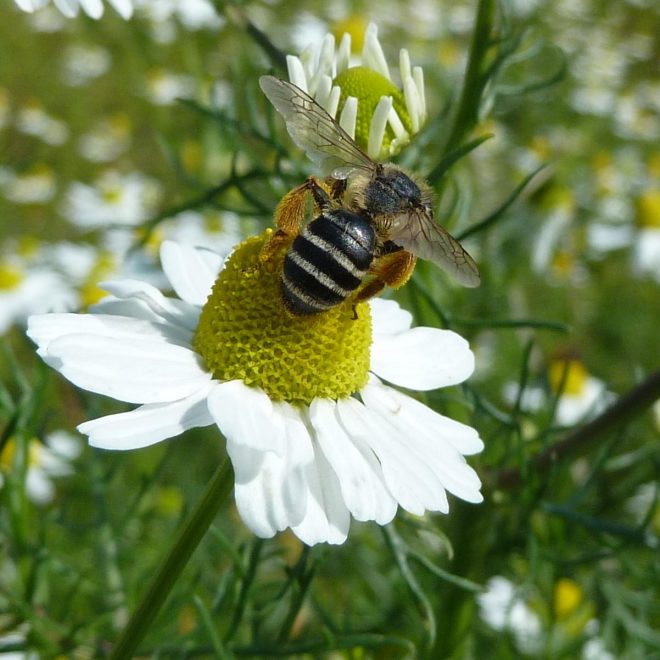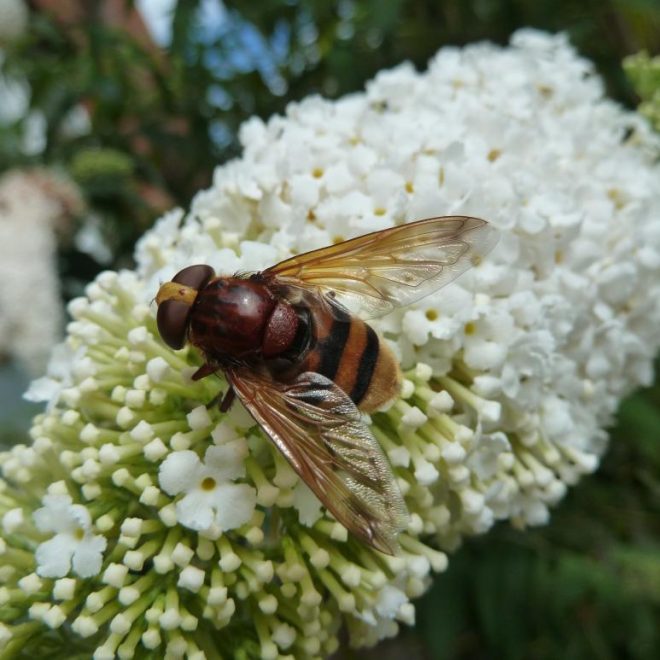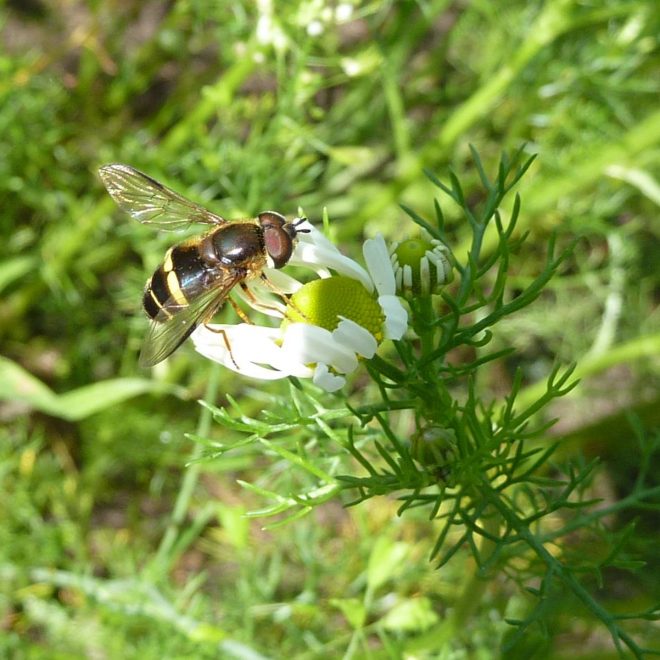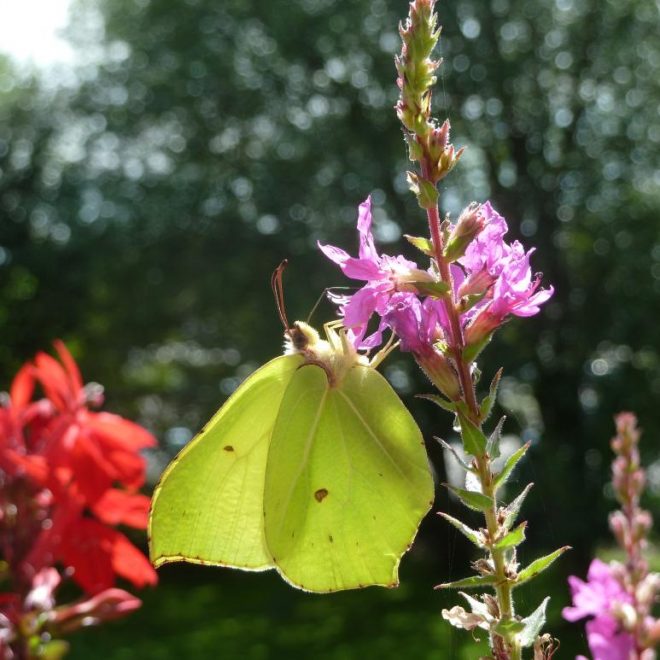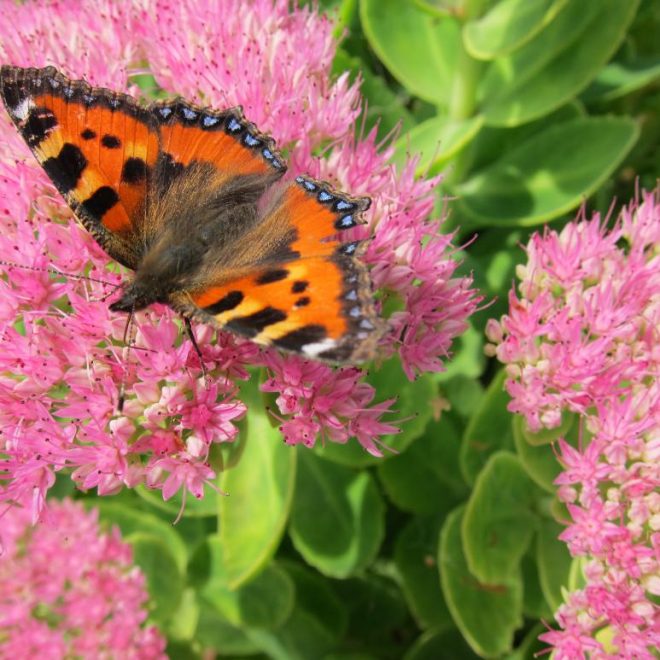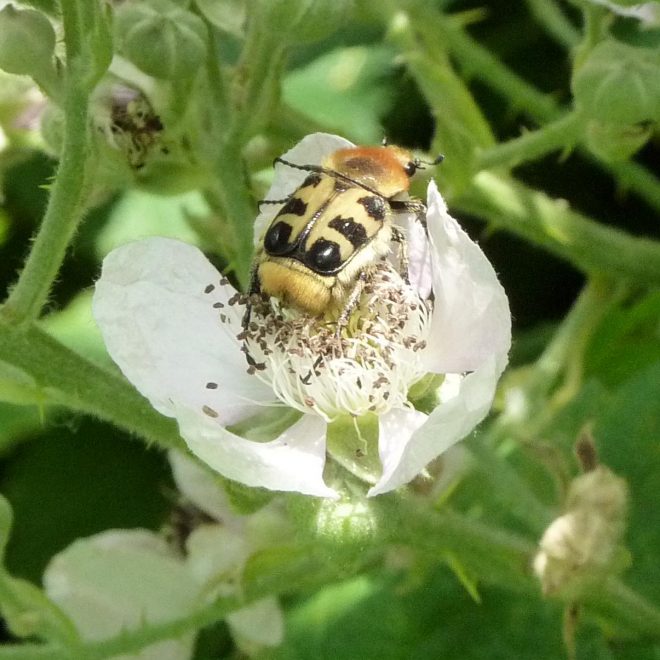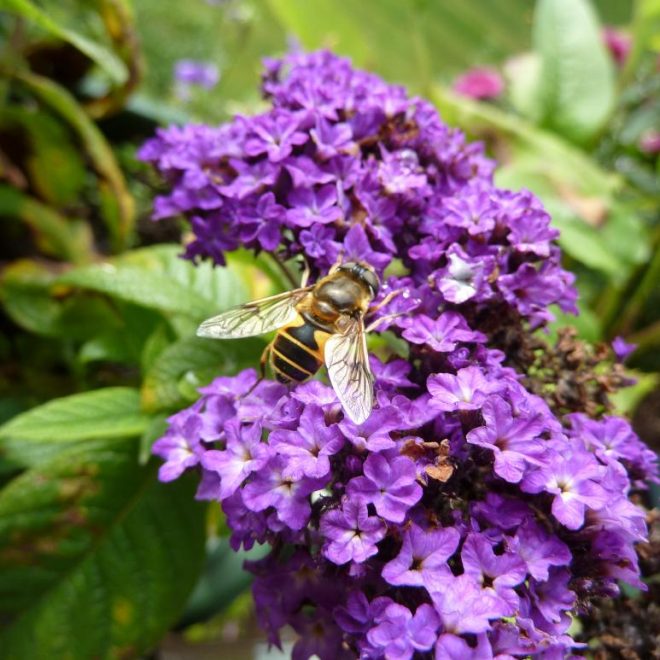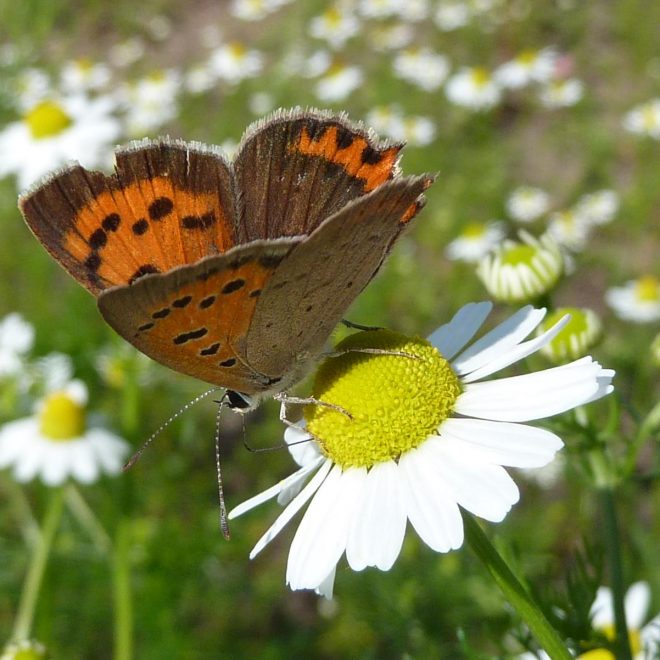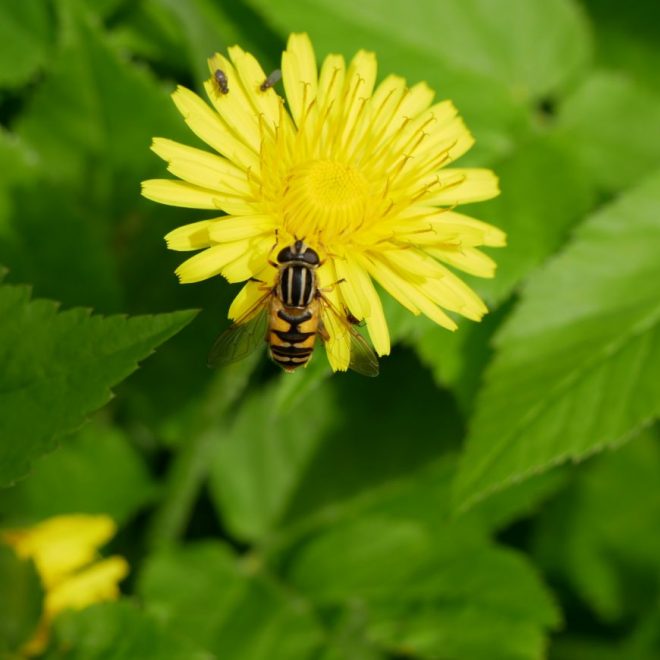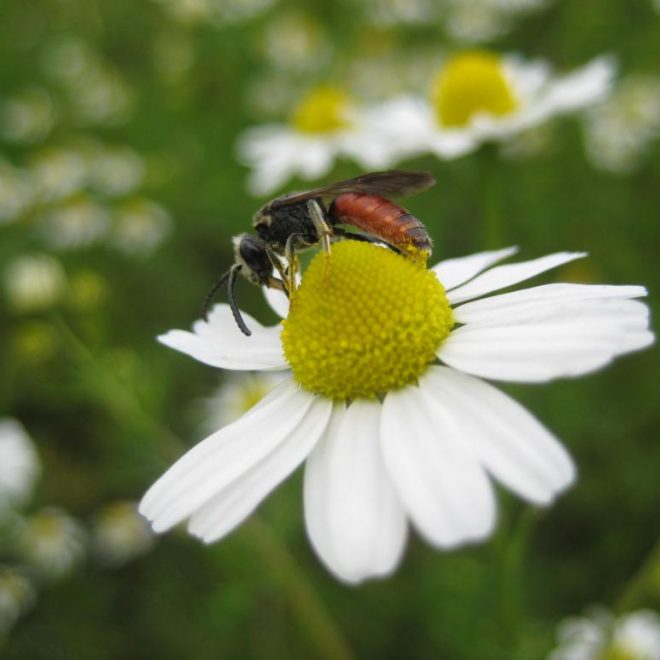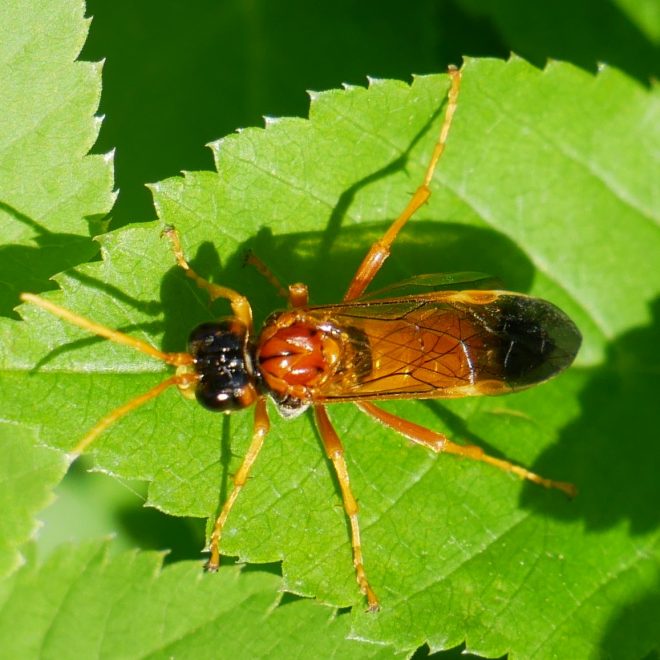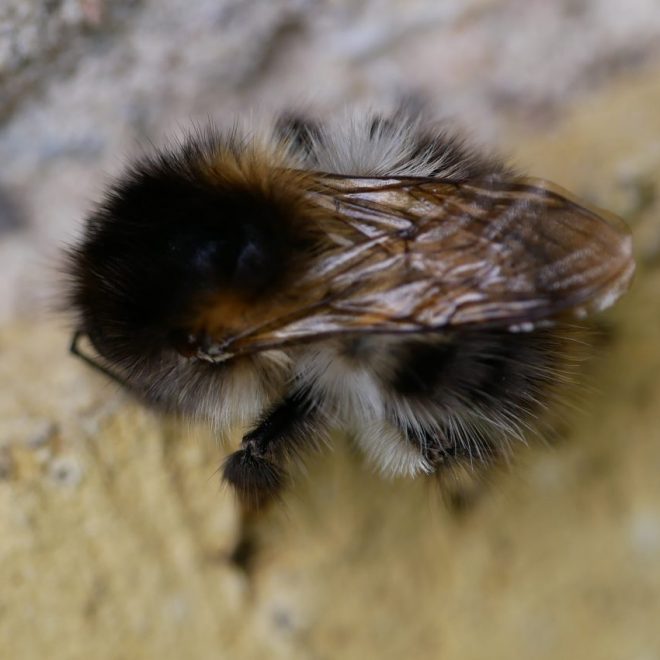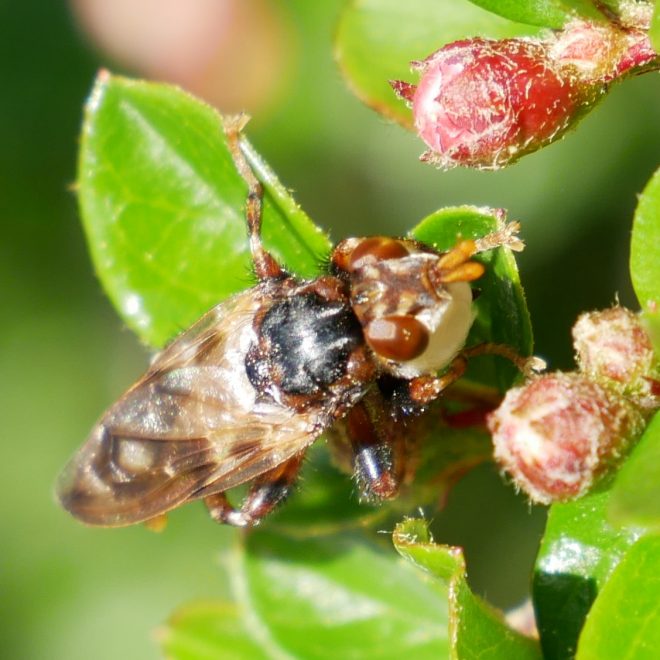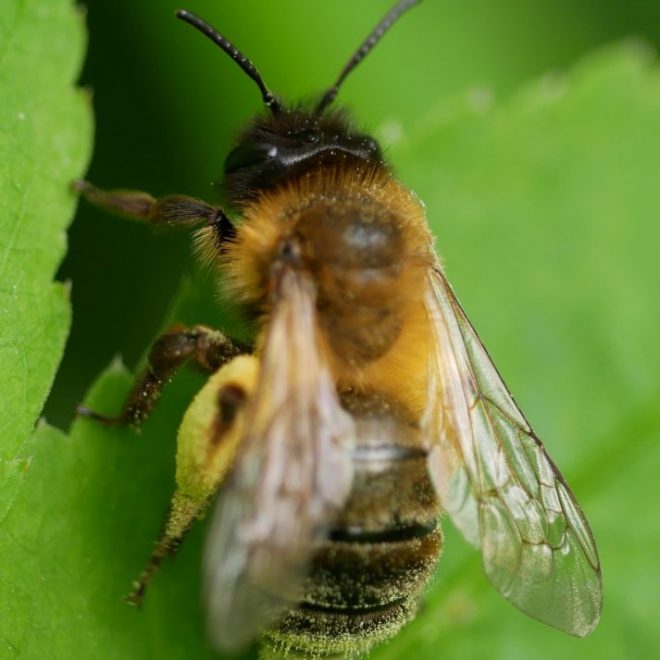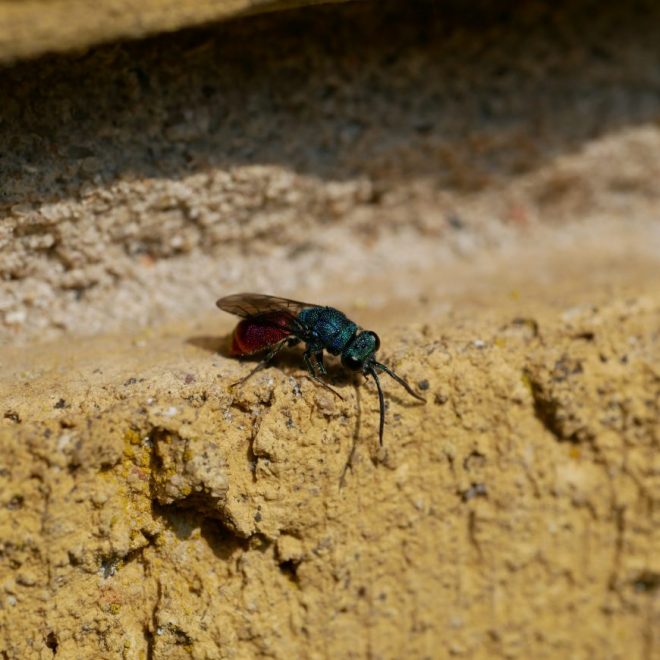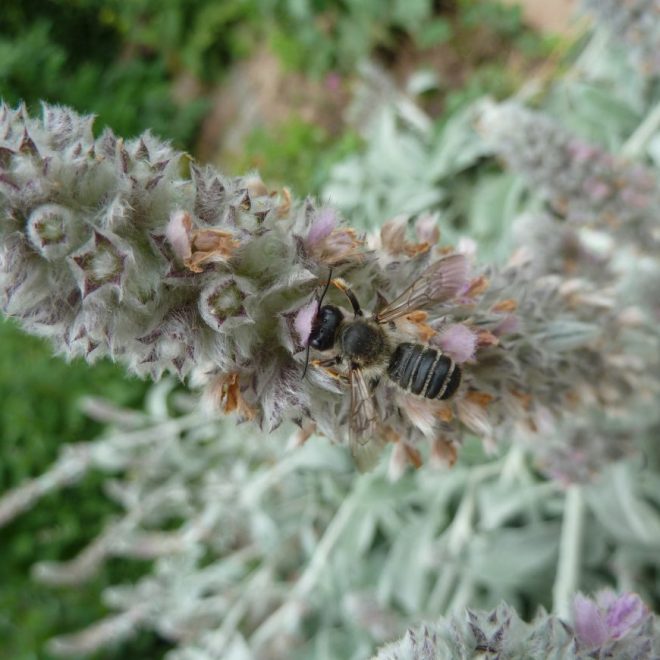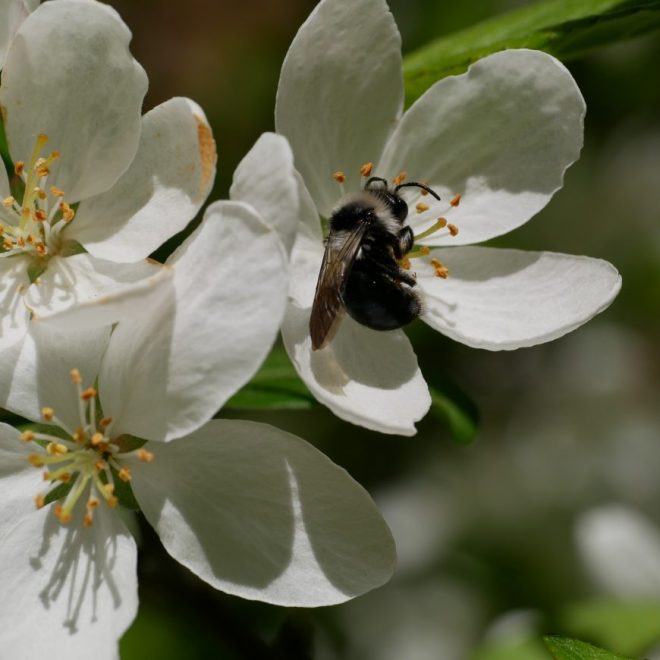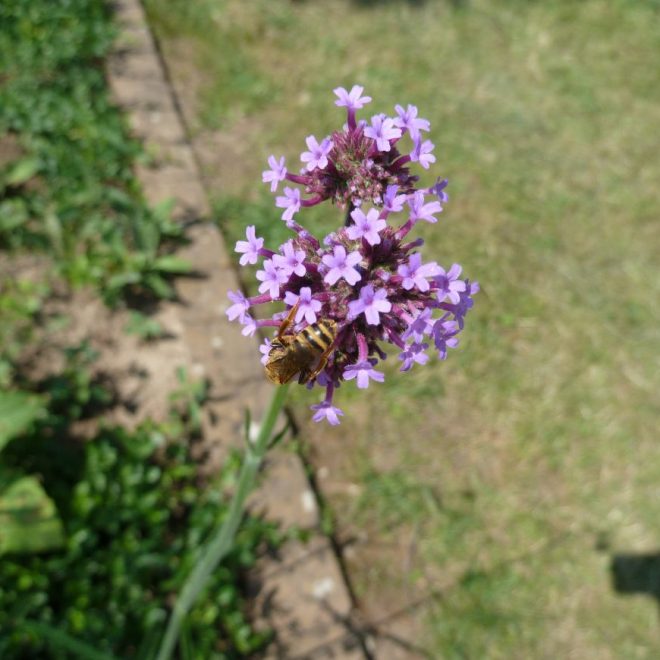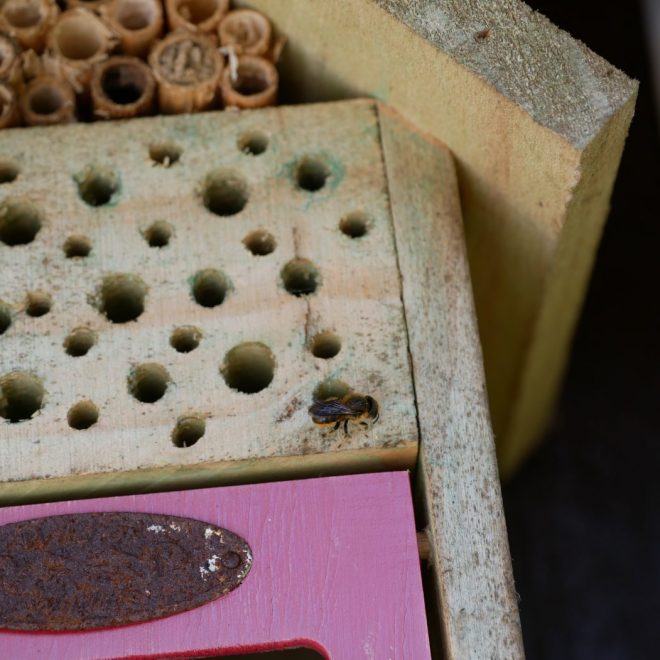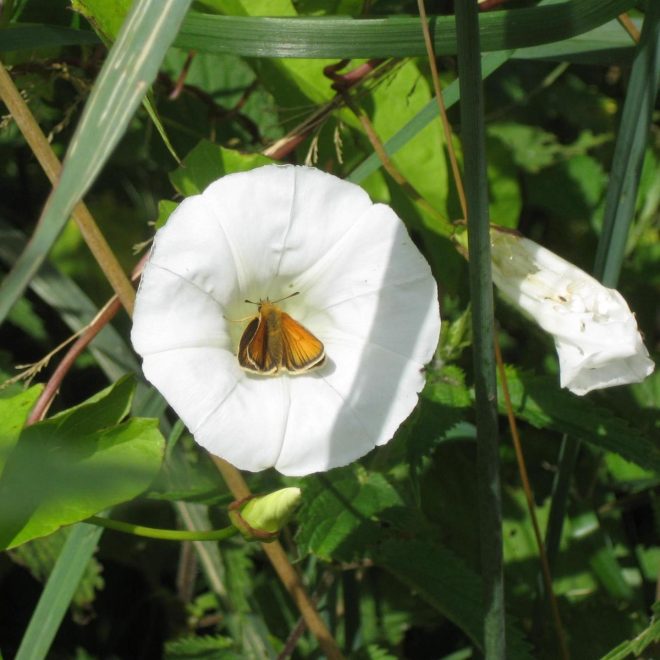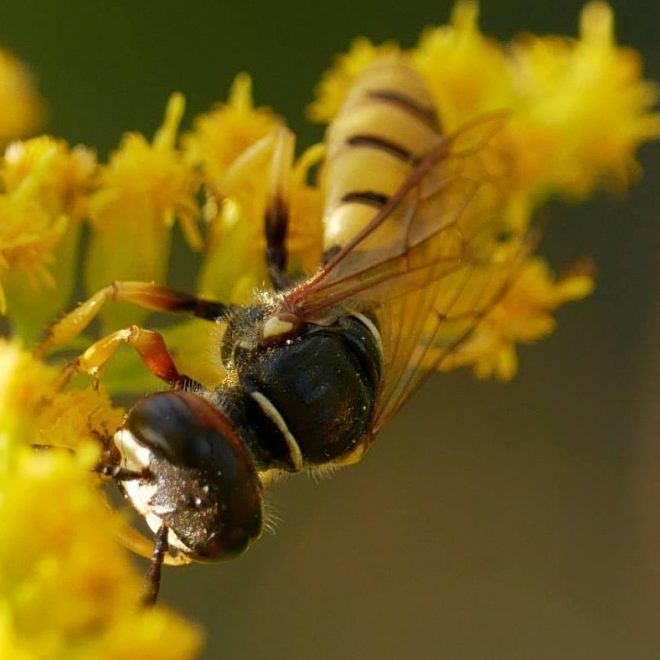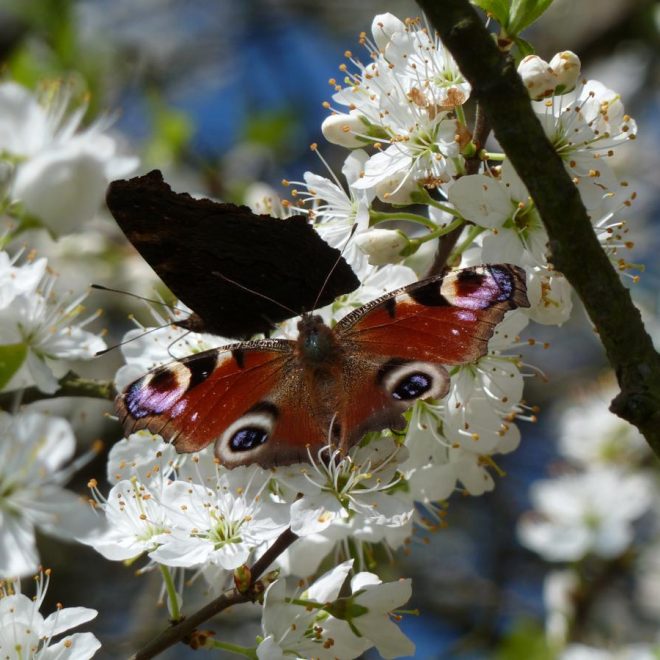Diversity
Discover the colorful world of pollinators.
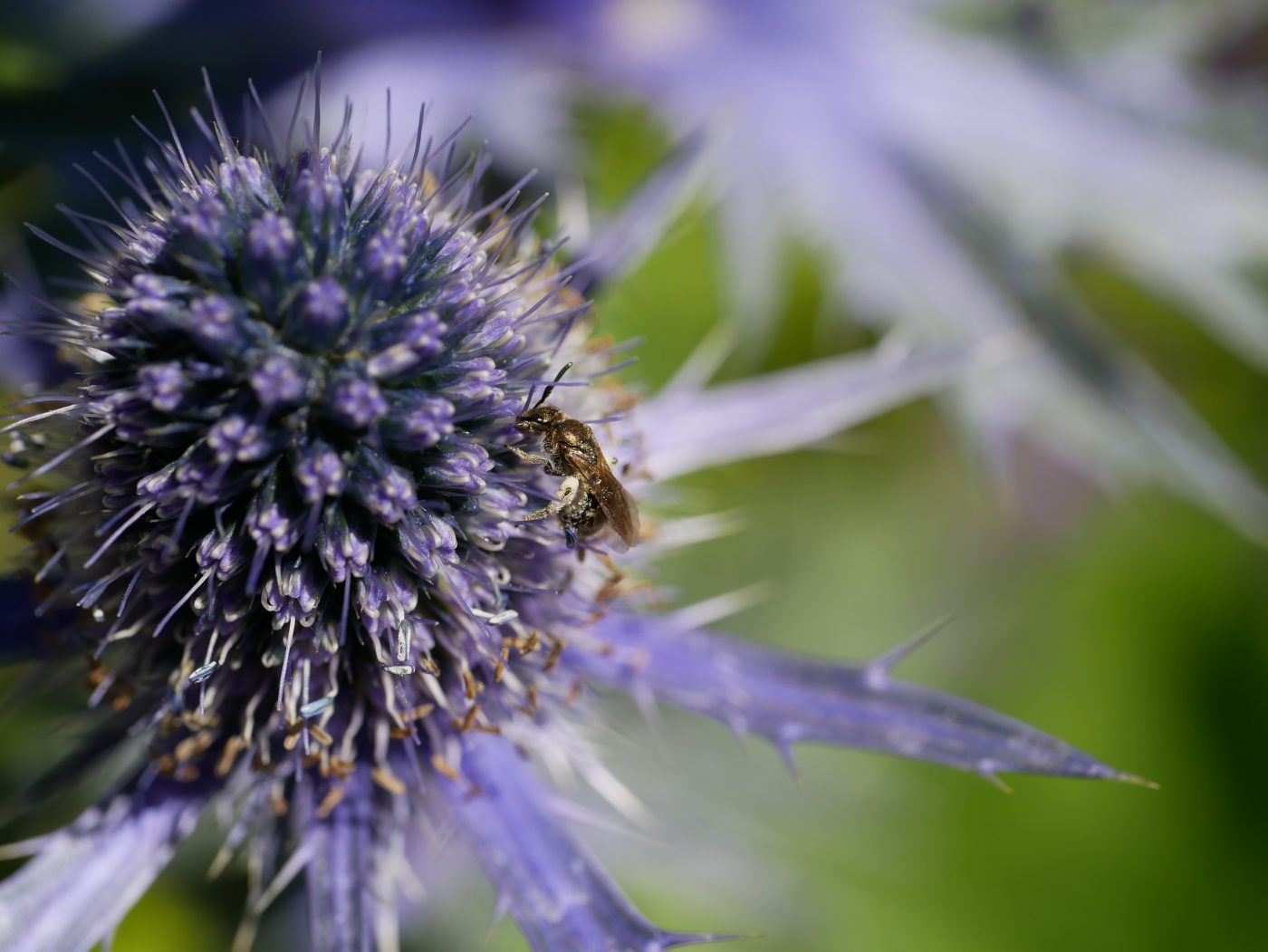
Most people are familiar with honeybees, but there are many more pollinators. Wild bees, like bumblebees, or other insects such as wasps, hoverflies, butterflies and bugs pollinate a wide range of different flowers by transferring pollen from blossom to blossom. In exotic countries, hummingbirds and special bats are important pollinators as well.
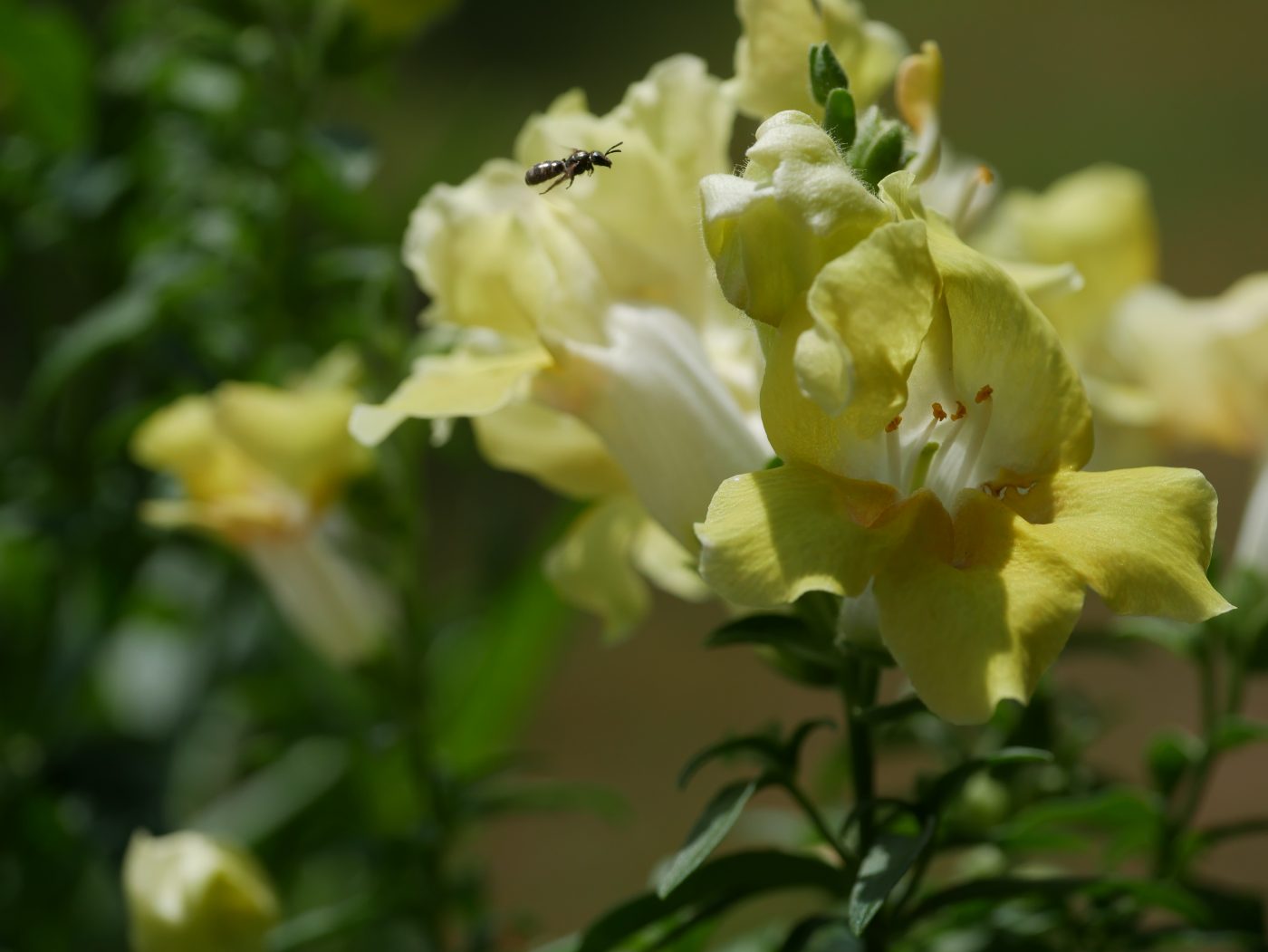
The majority of wildbees are not living in colonies like the honeybee, but are solitary insects. Only bumblebees and some of the sweat bees form annual colonies and live together. There are many other differences in who and where the species live. About 70% of the wildbees live in the ground, most of them belong to the species of mining bees. The other 30% nest in crevices, deadwood or in stalks that might contain marrow. Crevices are very suitable for nest e.g. of the carder bees, while deadwood is preferred by carpenter bees, fork-tailed flower-bees and Willughby’s leafcutter. Mason bees, yellow-faced bees, scissor bees and large-headed resin-bees occupy empty of filled stems. Especially mason bees are well known to become creative and use human-made holes everywhere they can find them.
Domestic species
Flowers4Bees does not only care for the honeybees, but also for their wild relatives and neighbors. At this point, we would like to give you some insight into the world of our domestic pollinators and insects.
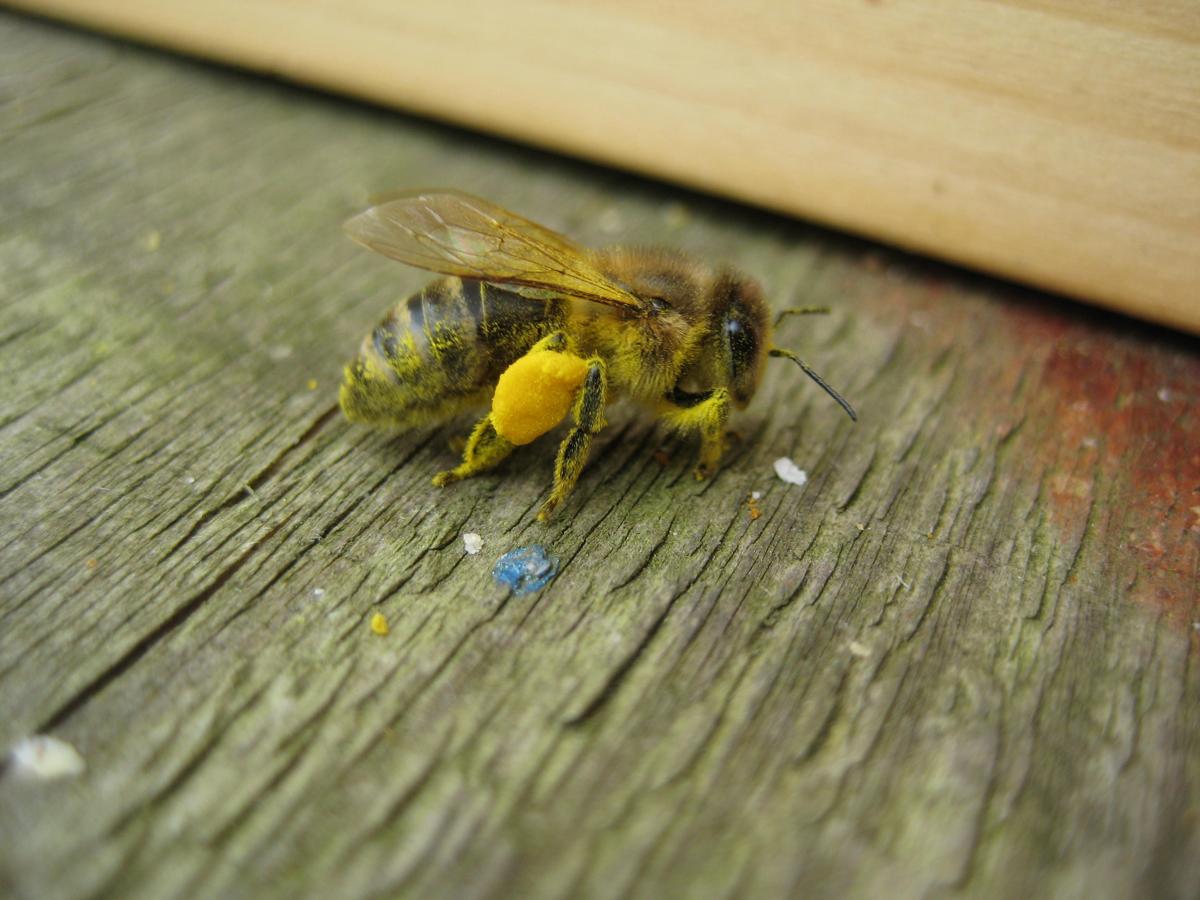
Apis mellifera

Adrena vaga

Bombus hypnorum
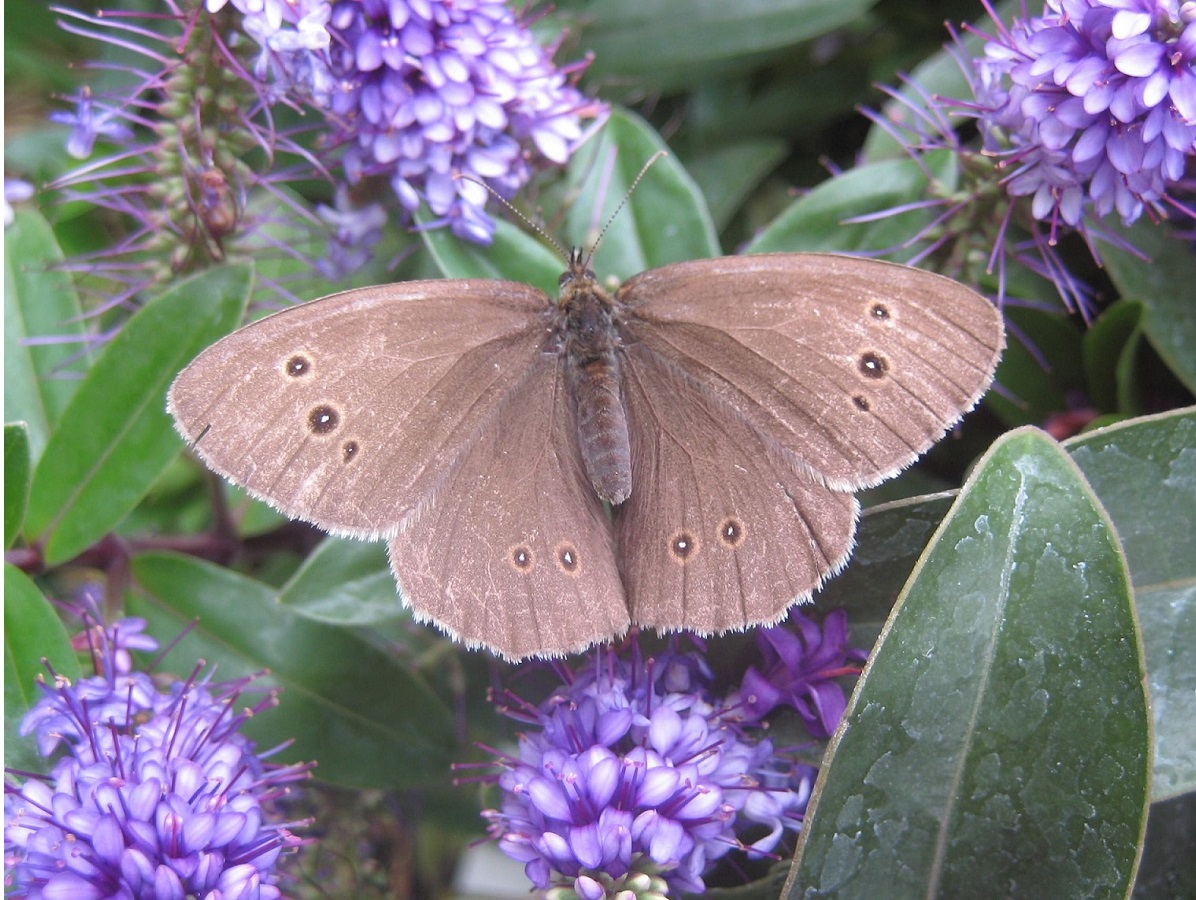
Aphantopus hyperantus
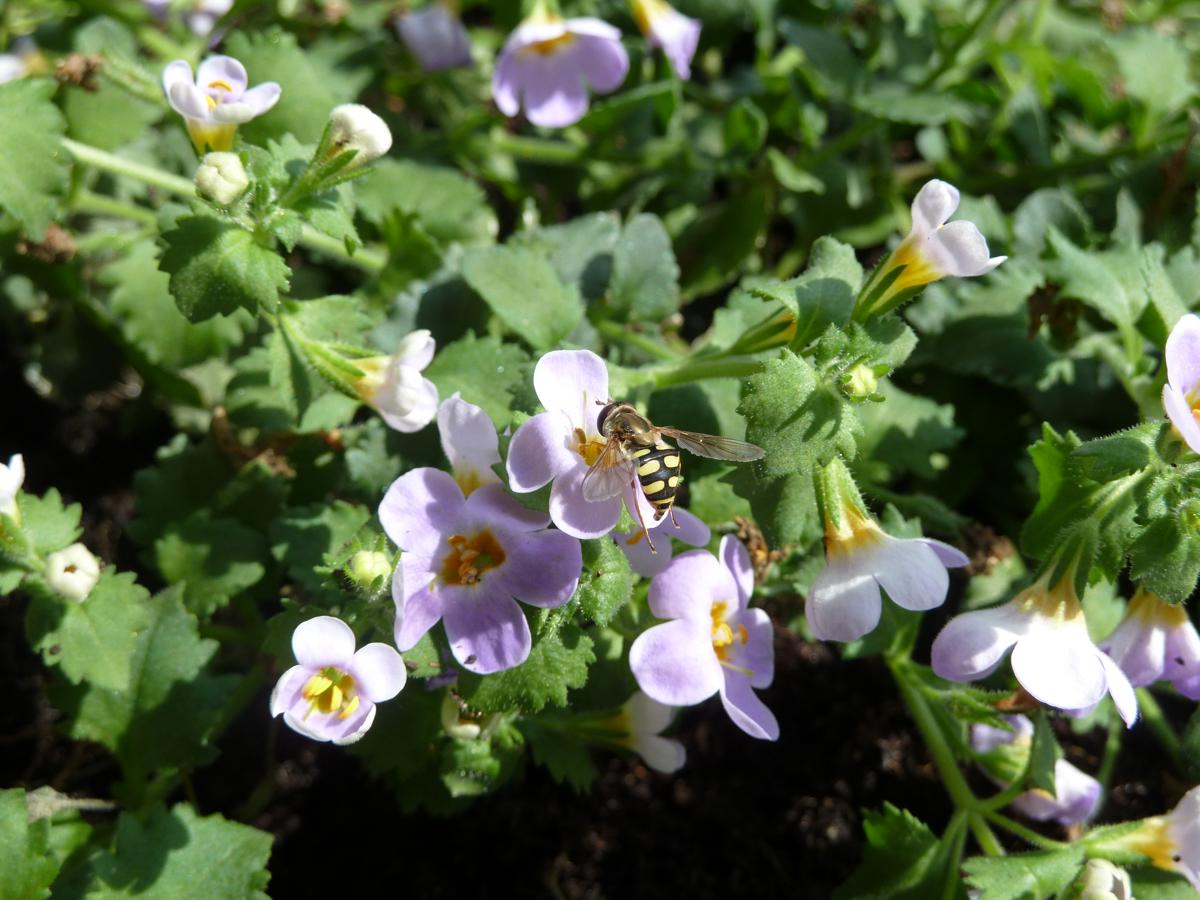
Syrphidae sp.
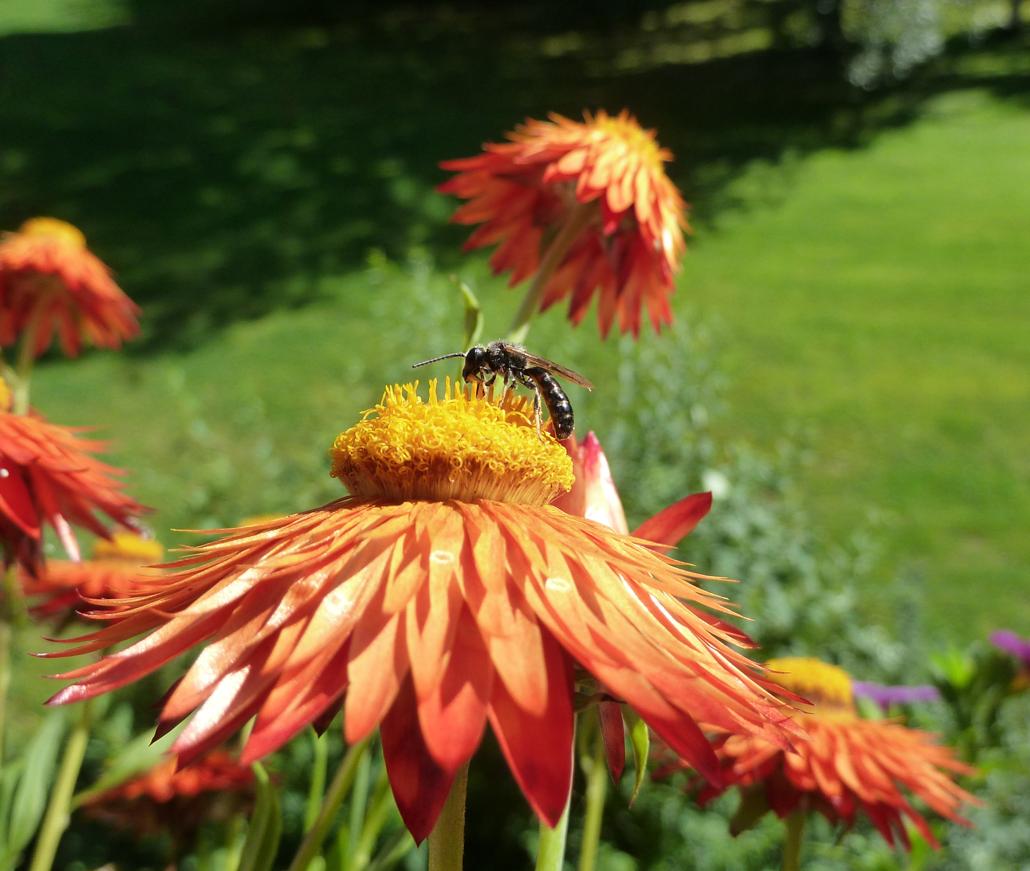
Heriades truncorum
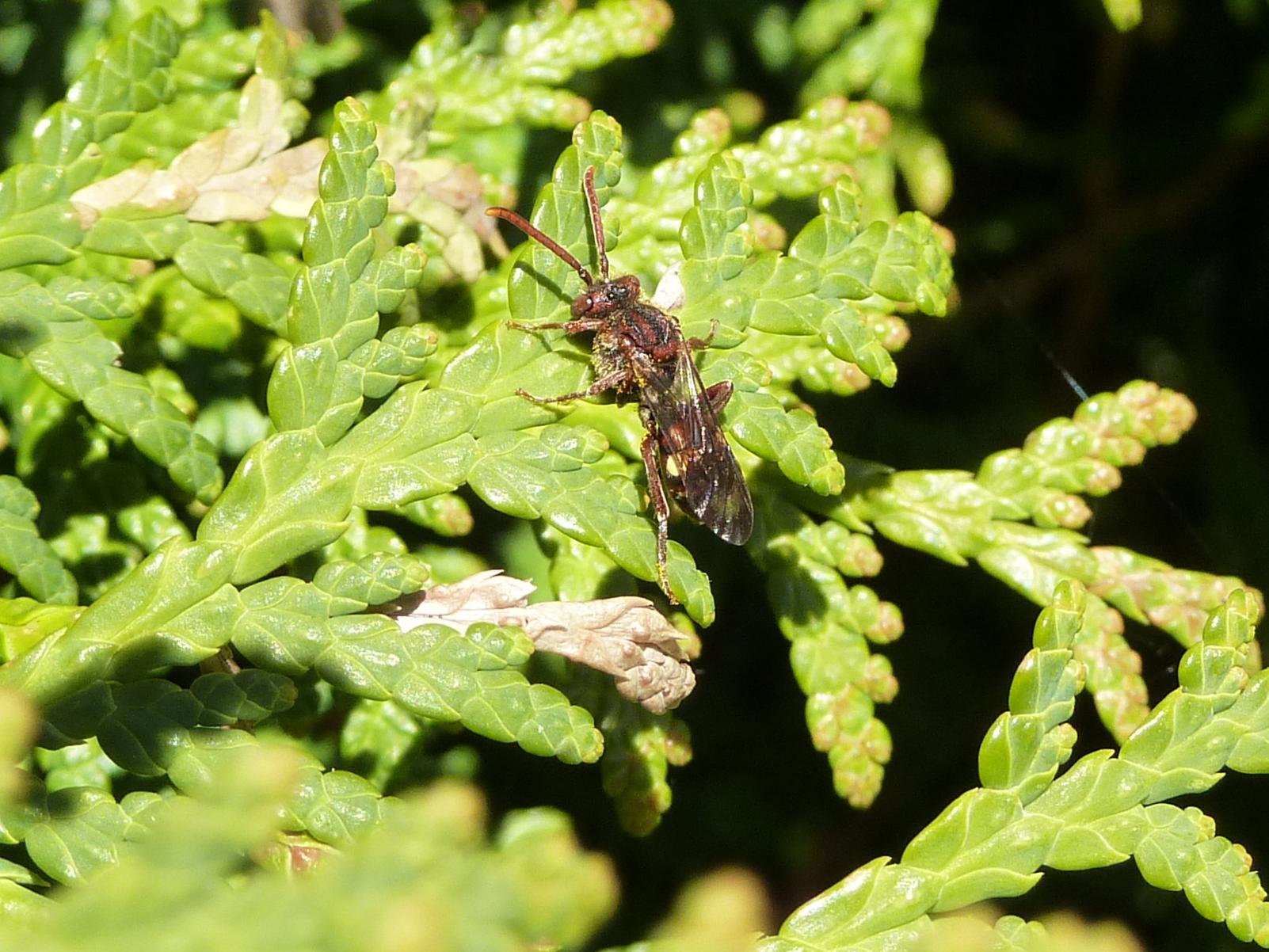
Nomada alboguttata
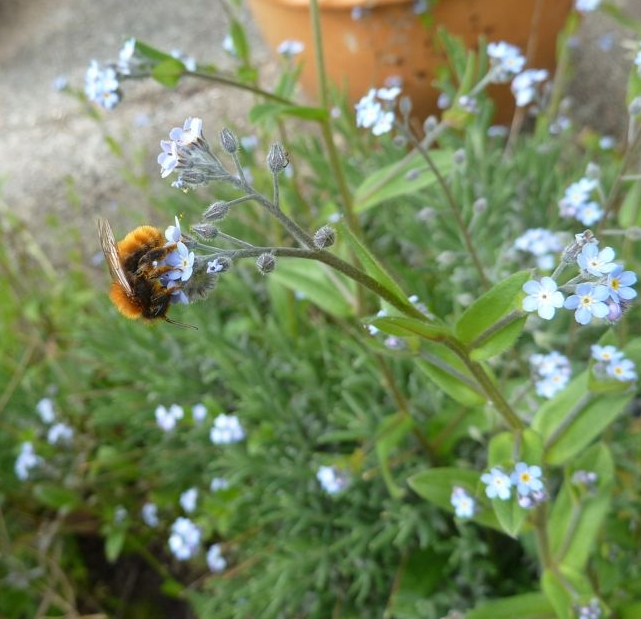
Andrena fulva
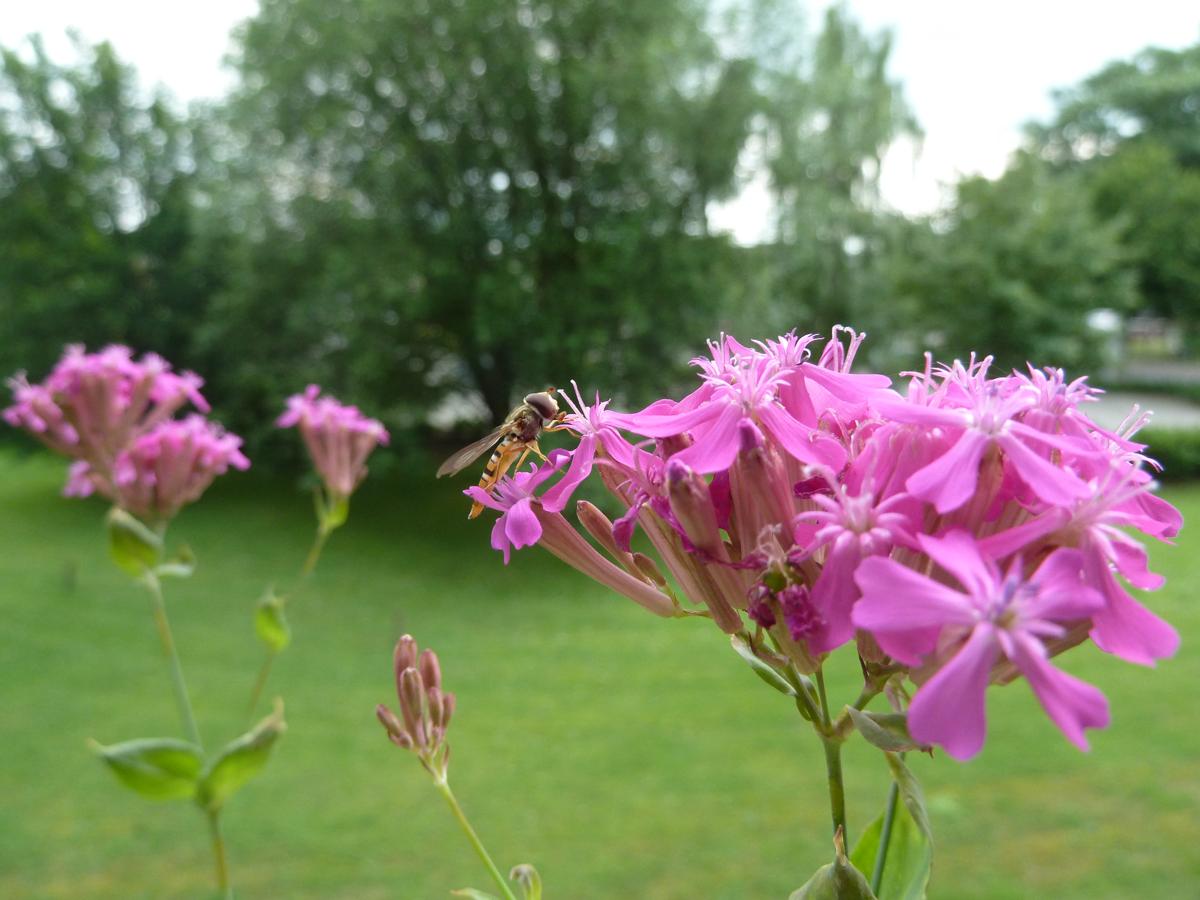
Episyrphus balteatus
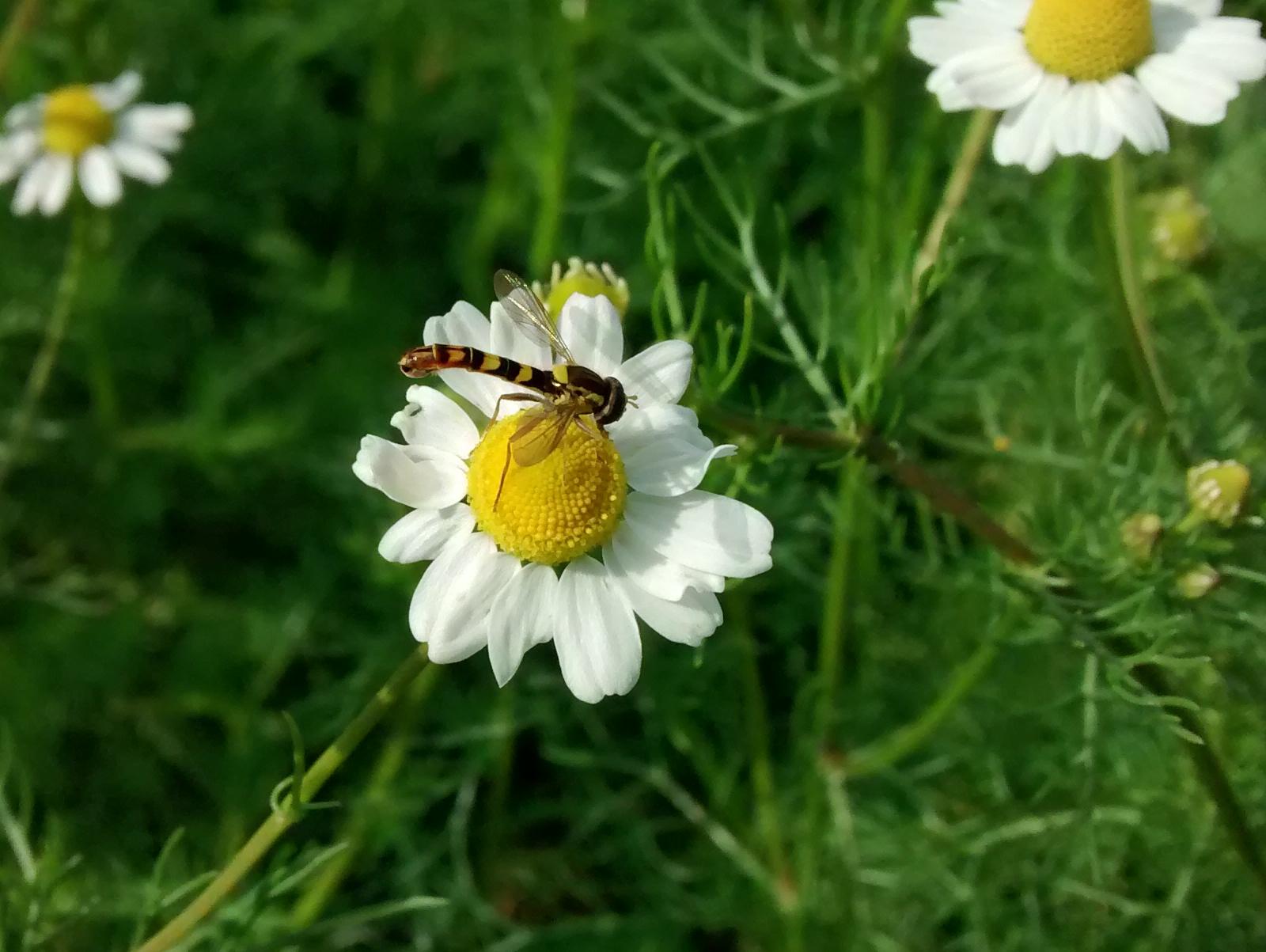
Sphaerophoria scripta
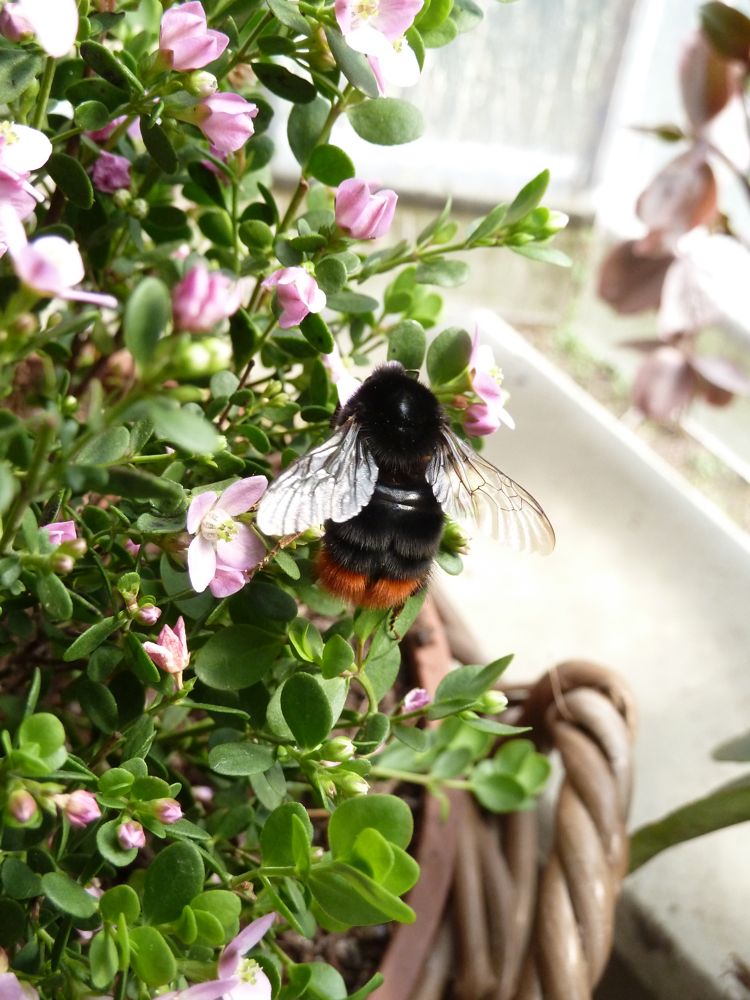
Bombus lapidarius
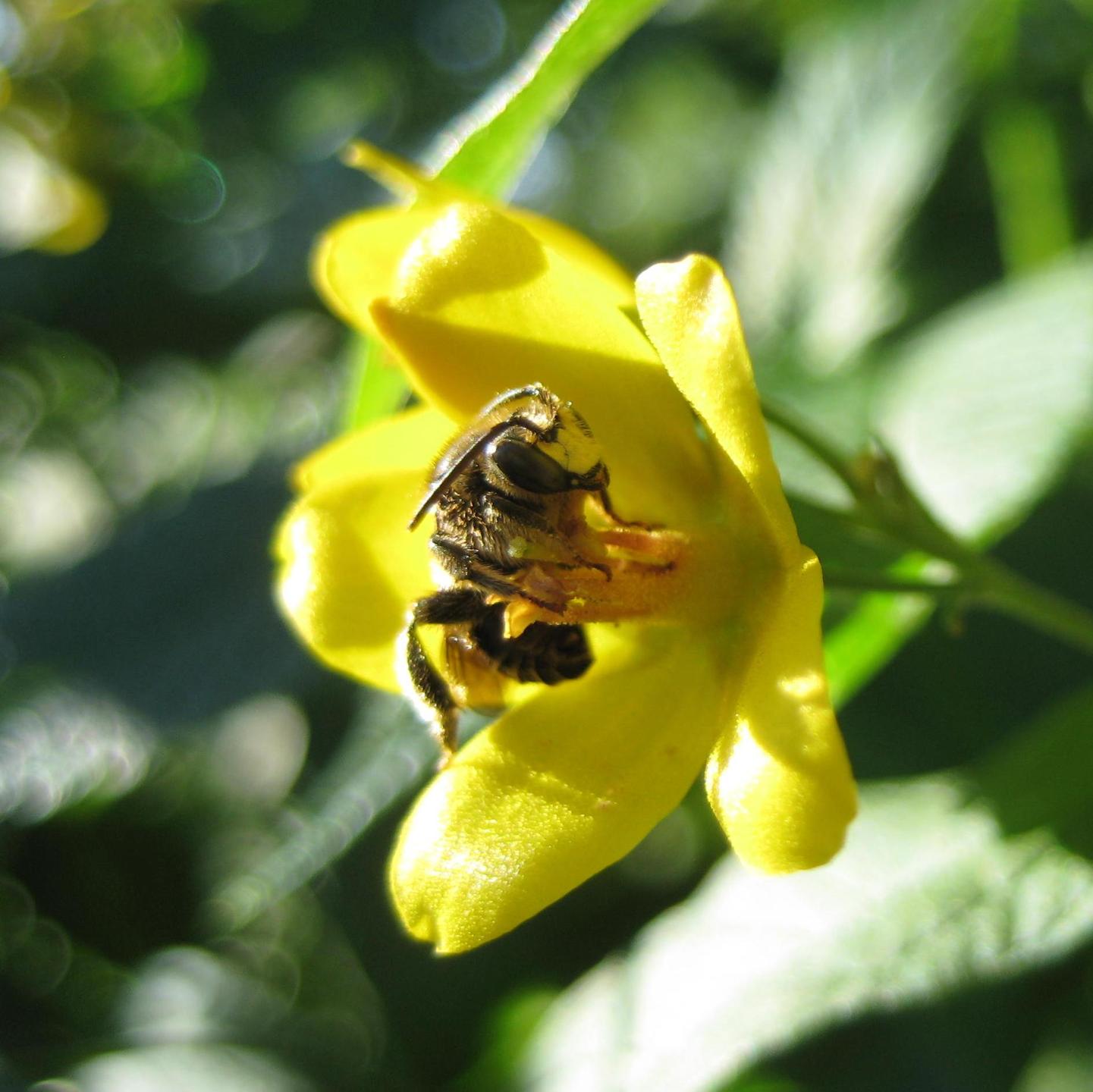
Macropis fulvipes
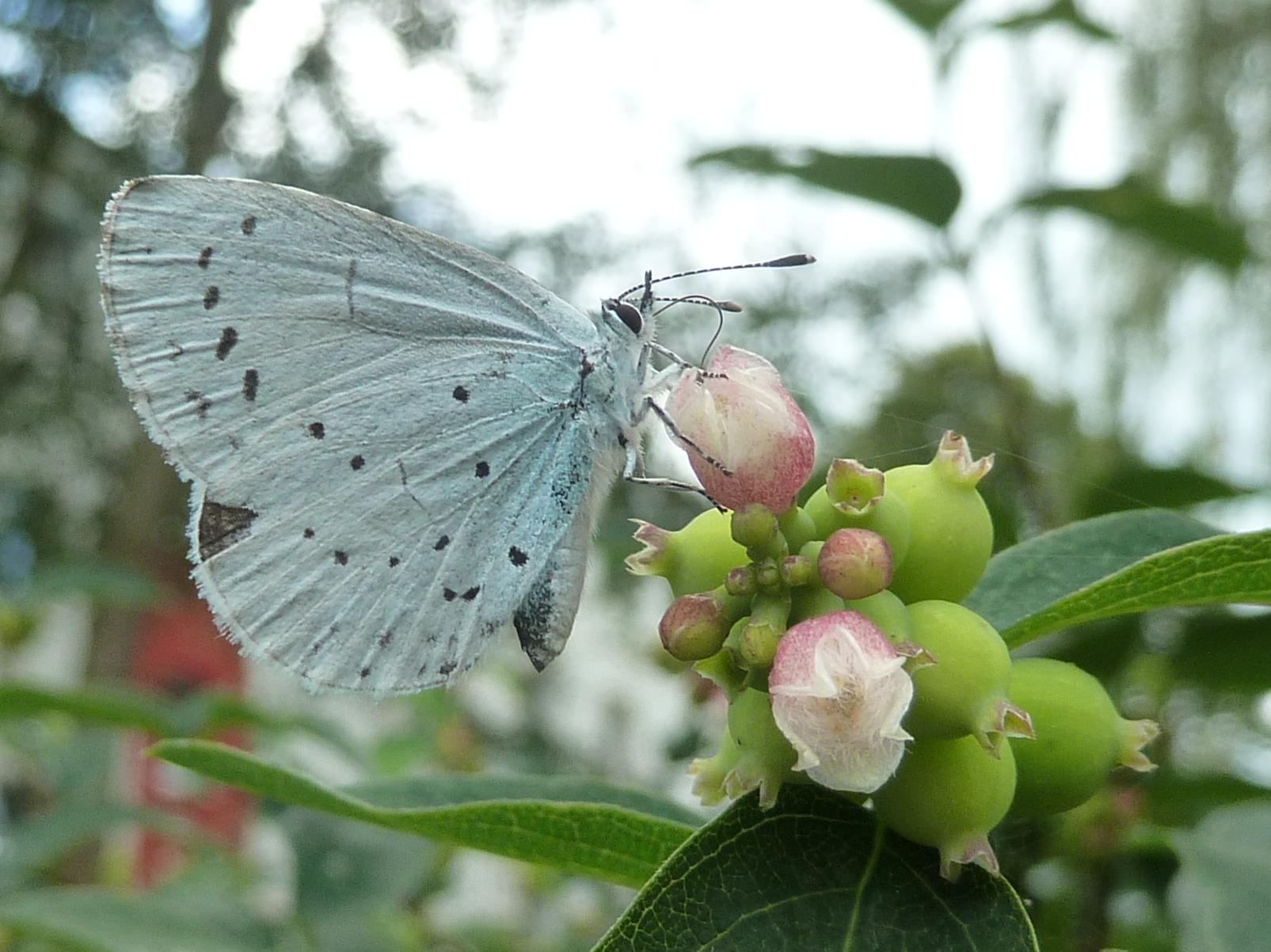
Lycaenidae

Vespinae sp.

Bicornis sp.
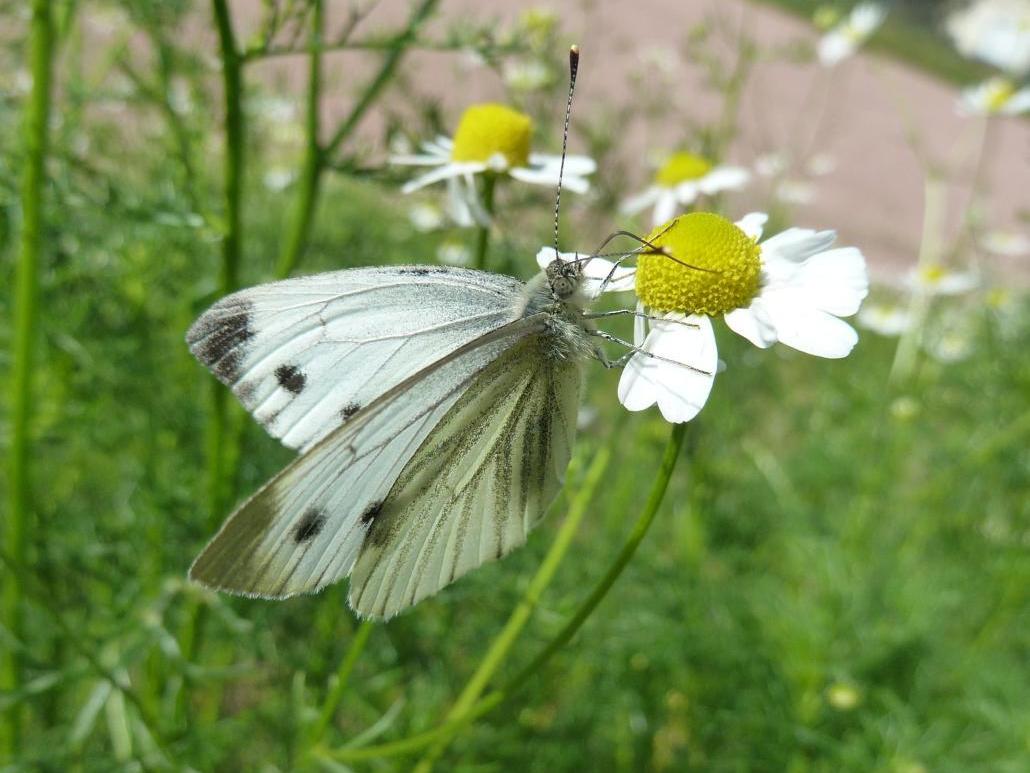
Pieris napi
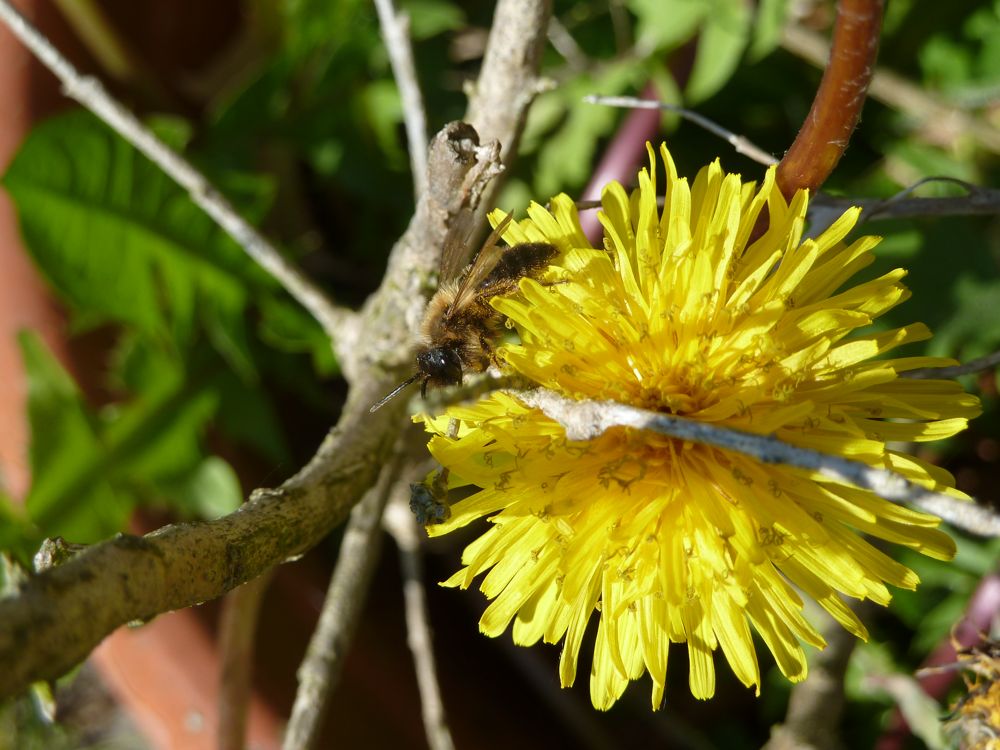
Adrena sp.

Bombus terrestris
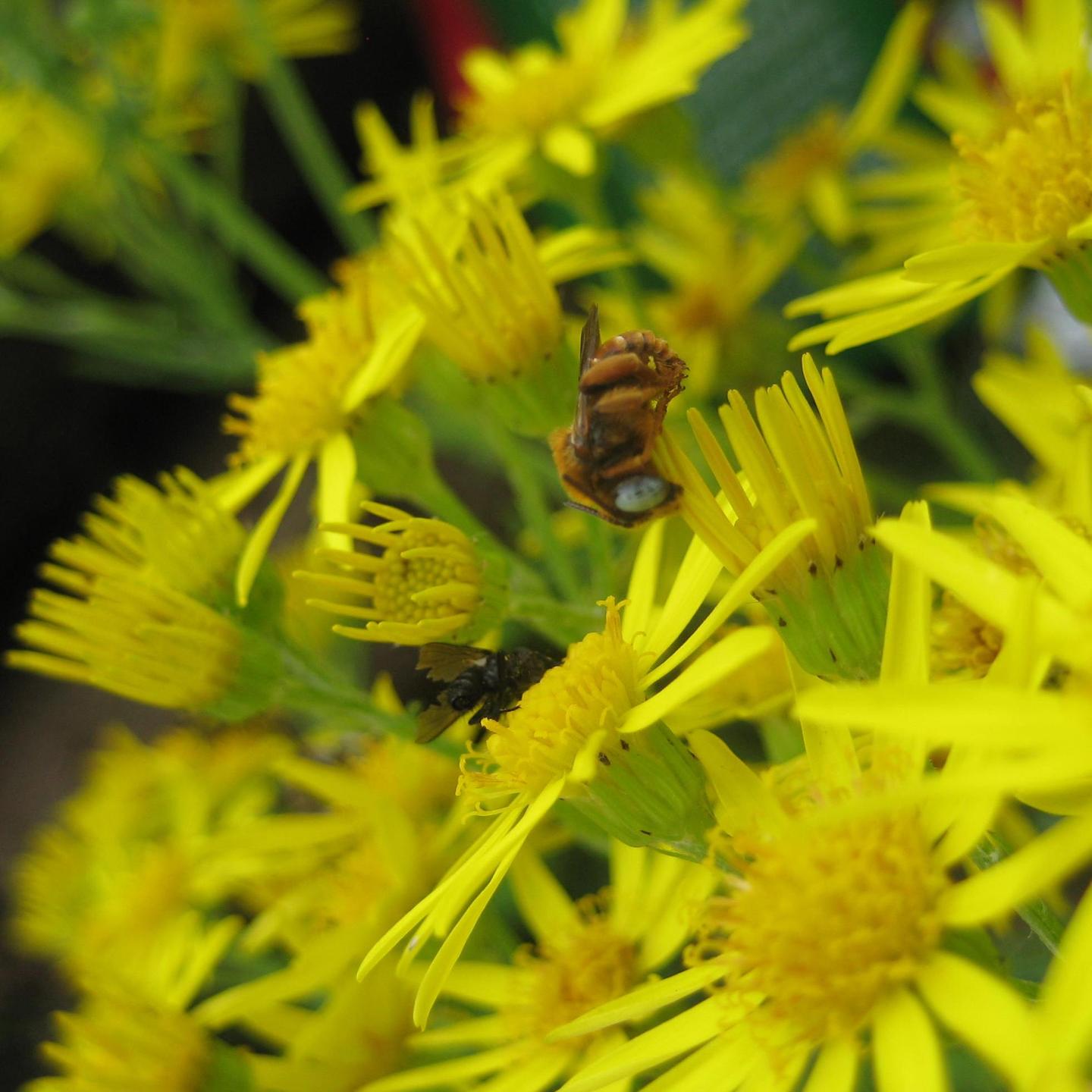
Epeoloides coecutiens

Artogeia rapae
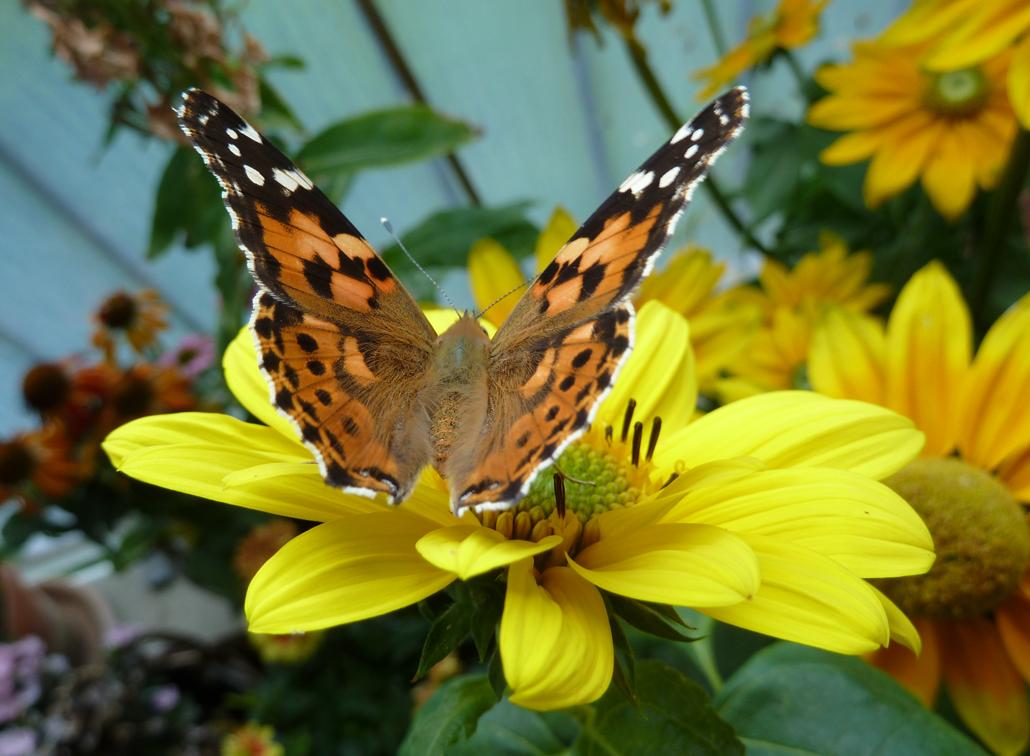
Vanessa cardui
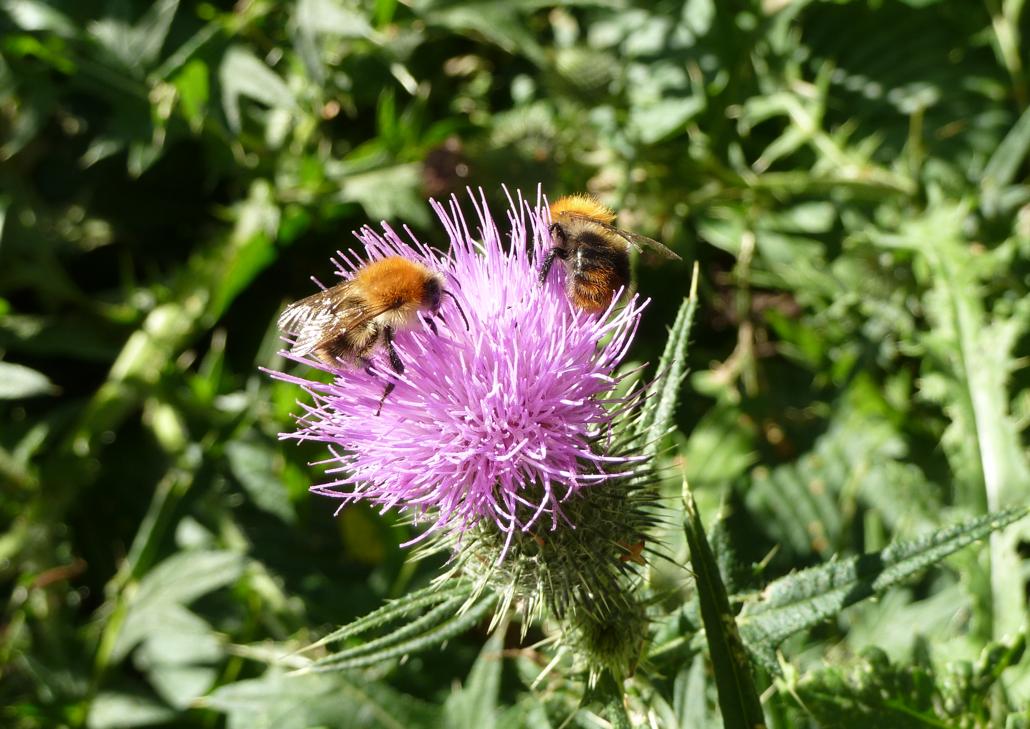
Bombus pascuorum
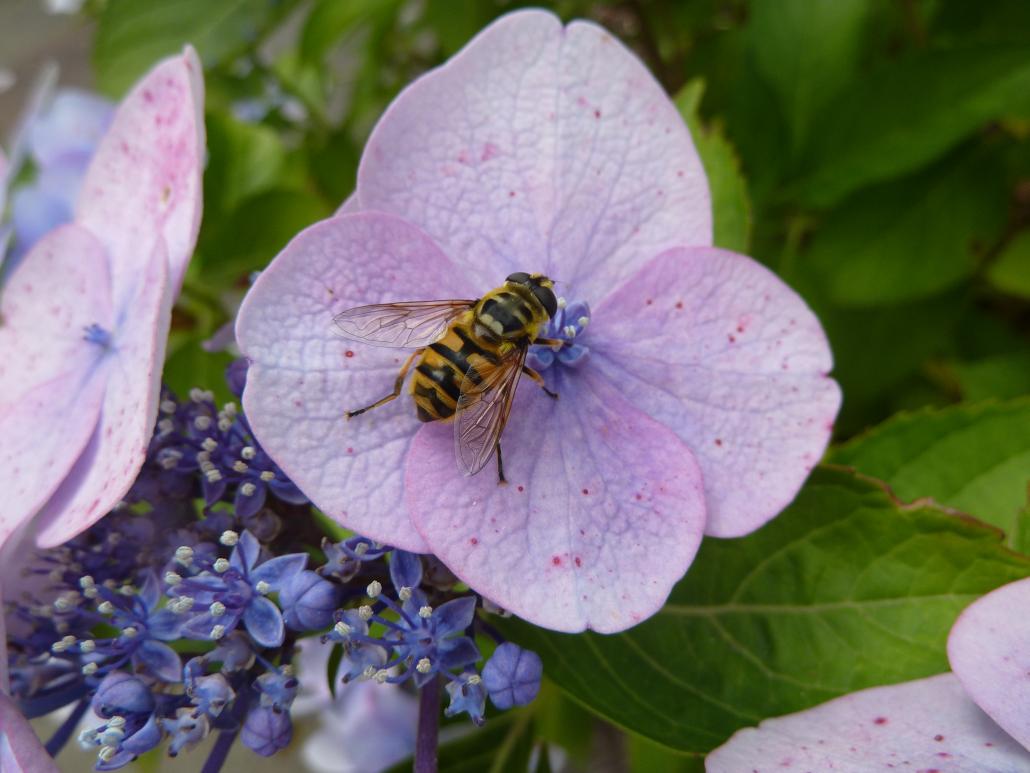
Myathropa florea

Volucella pellucens
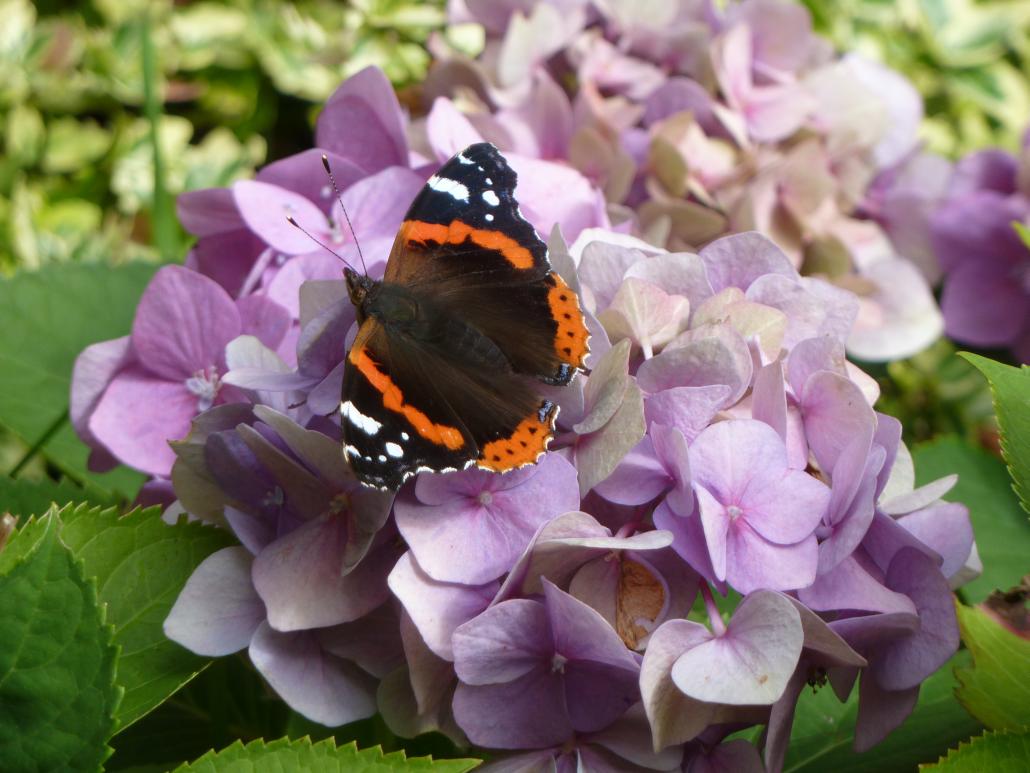
Vanessa atlanta
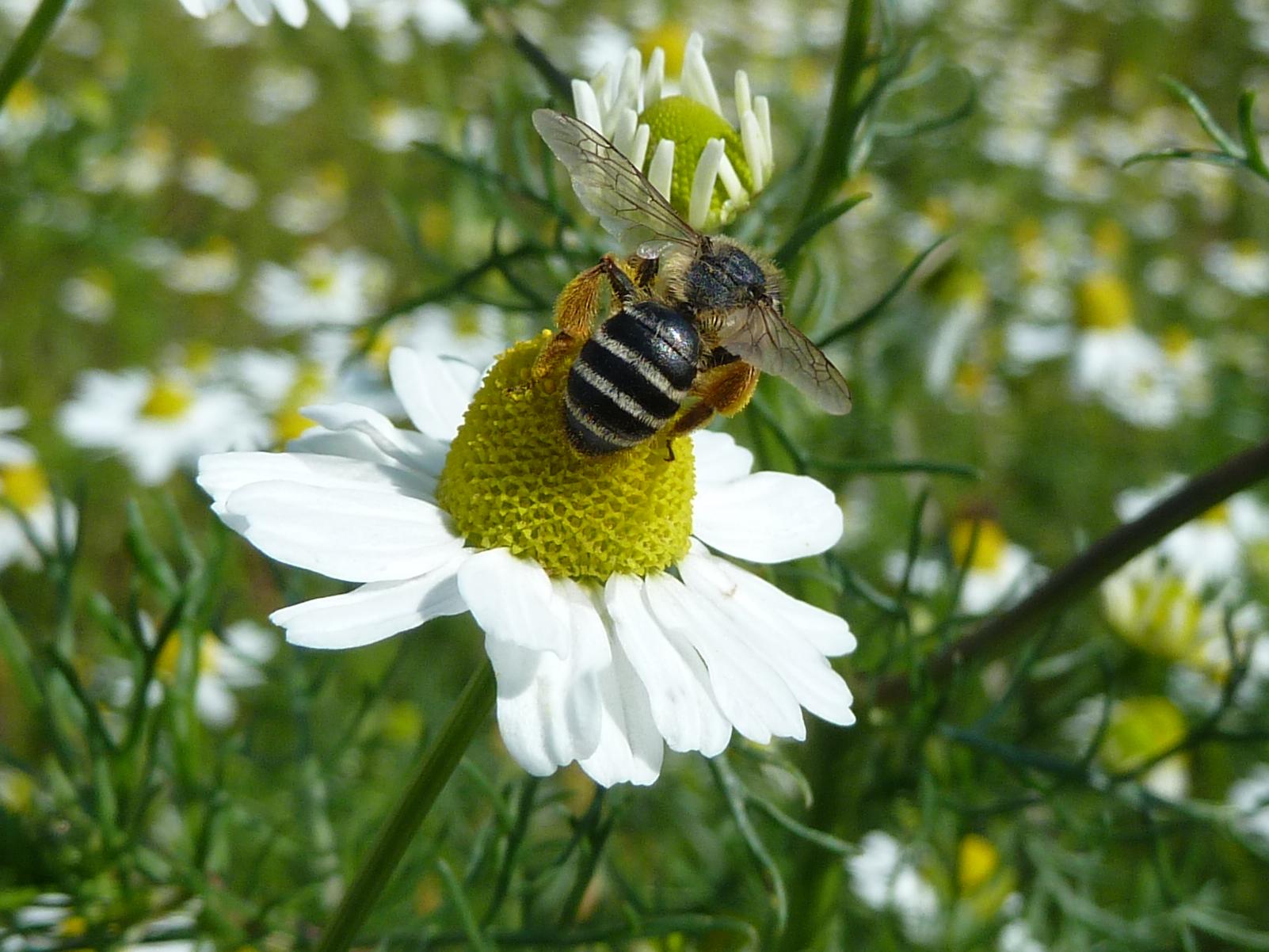
Andrena gravida
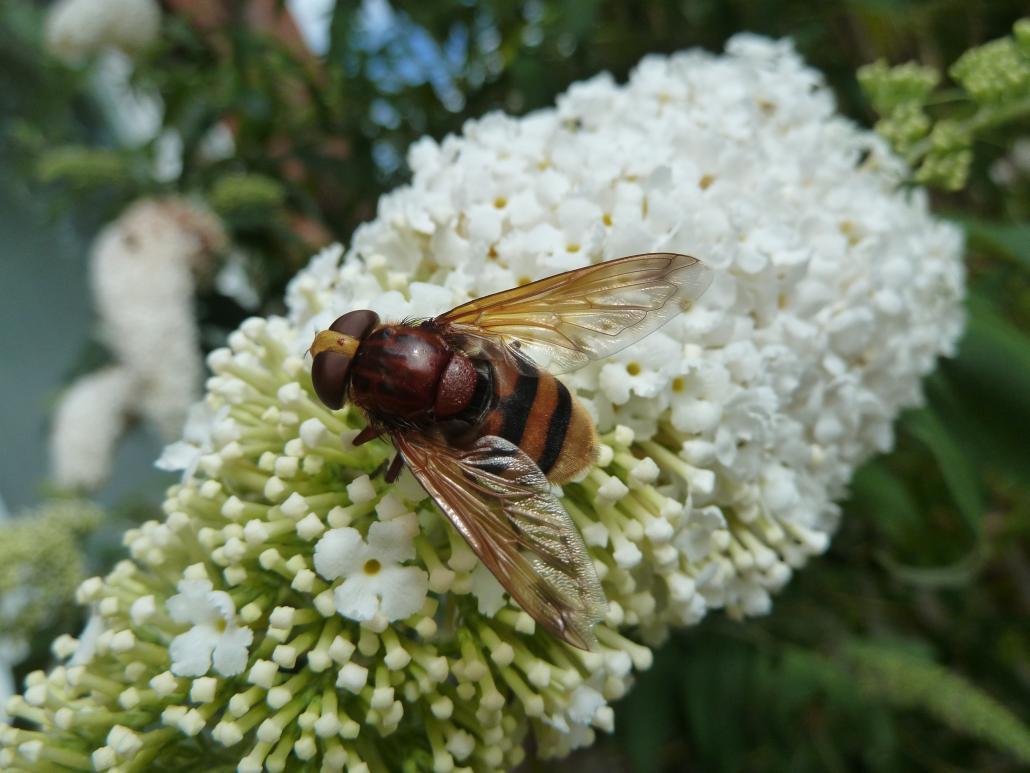
Volucella zonaria
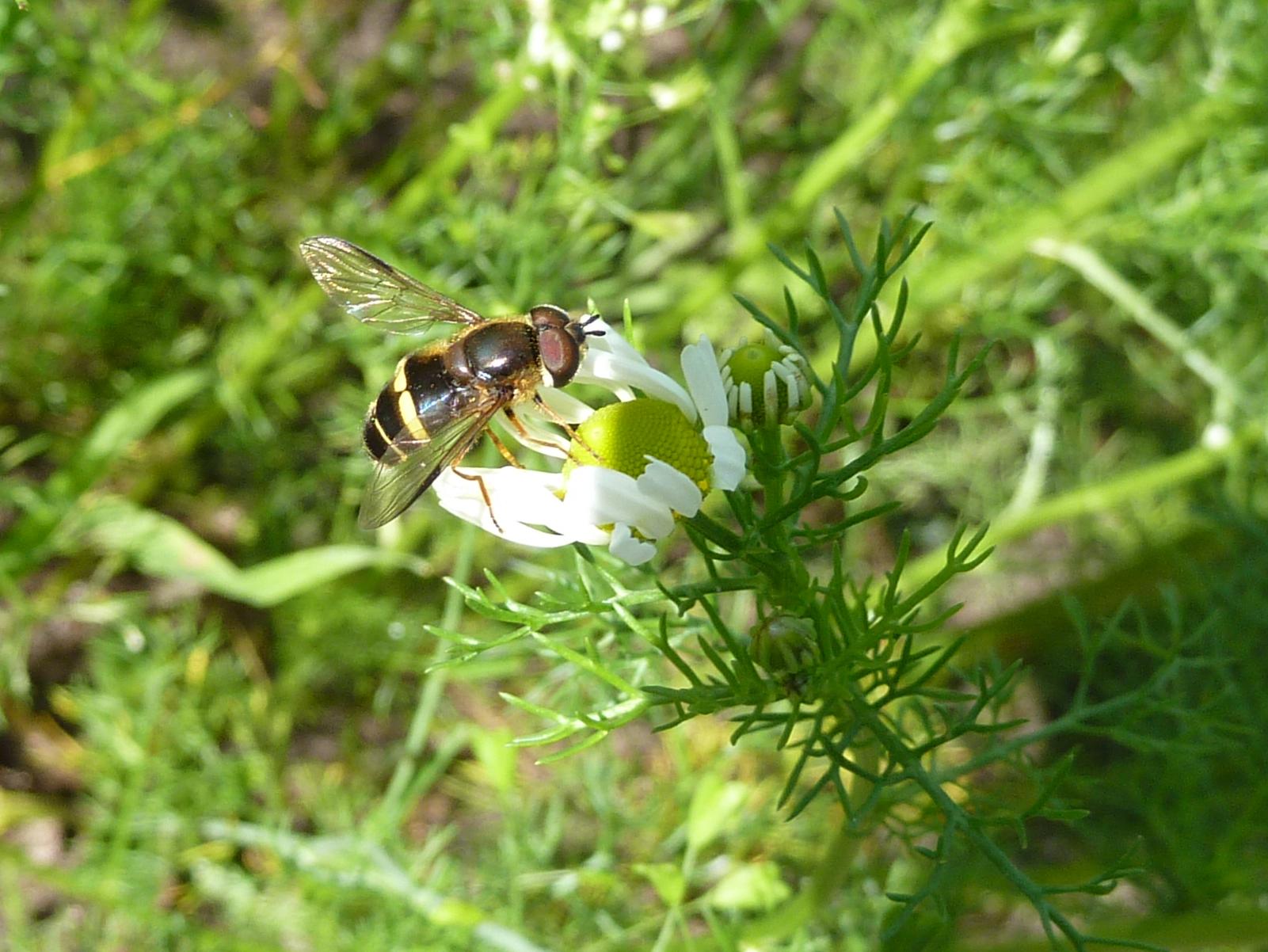
Dasysypruhs tricinctus
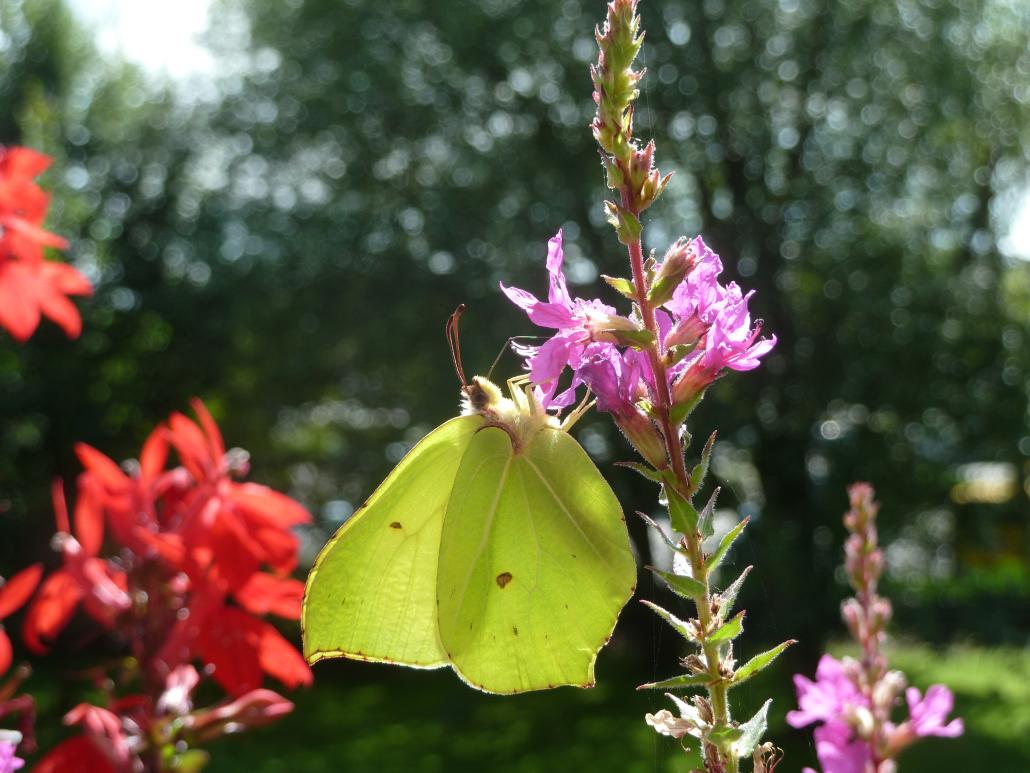
Gonepteryx rhamni
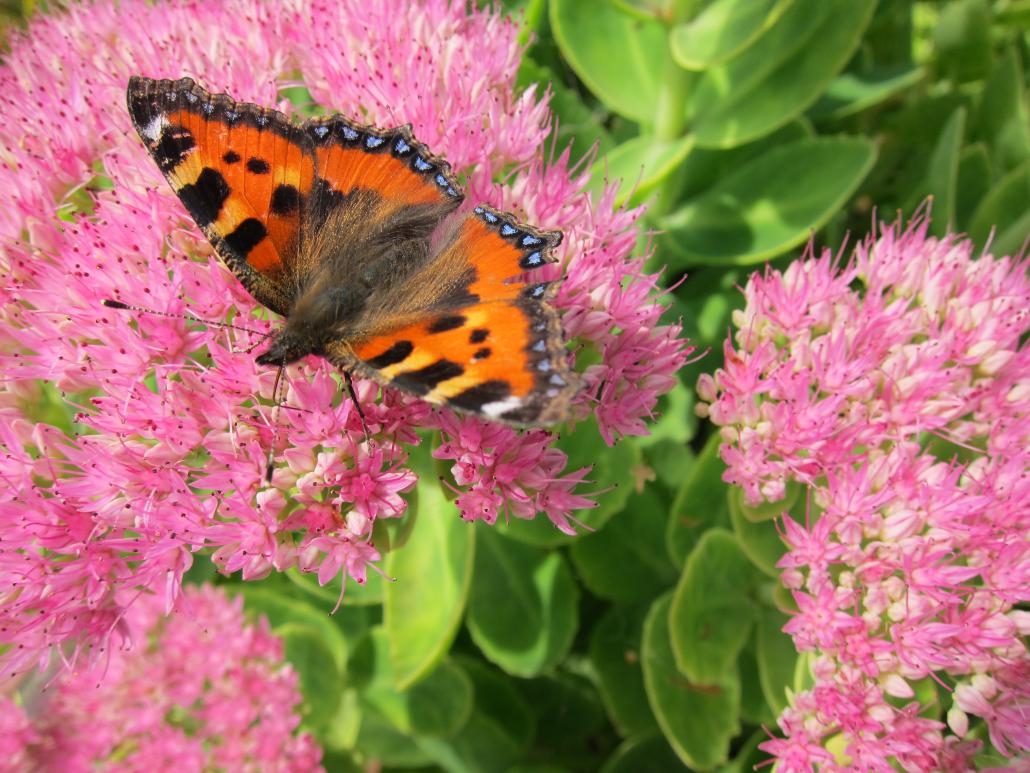
Aglais urticae
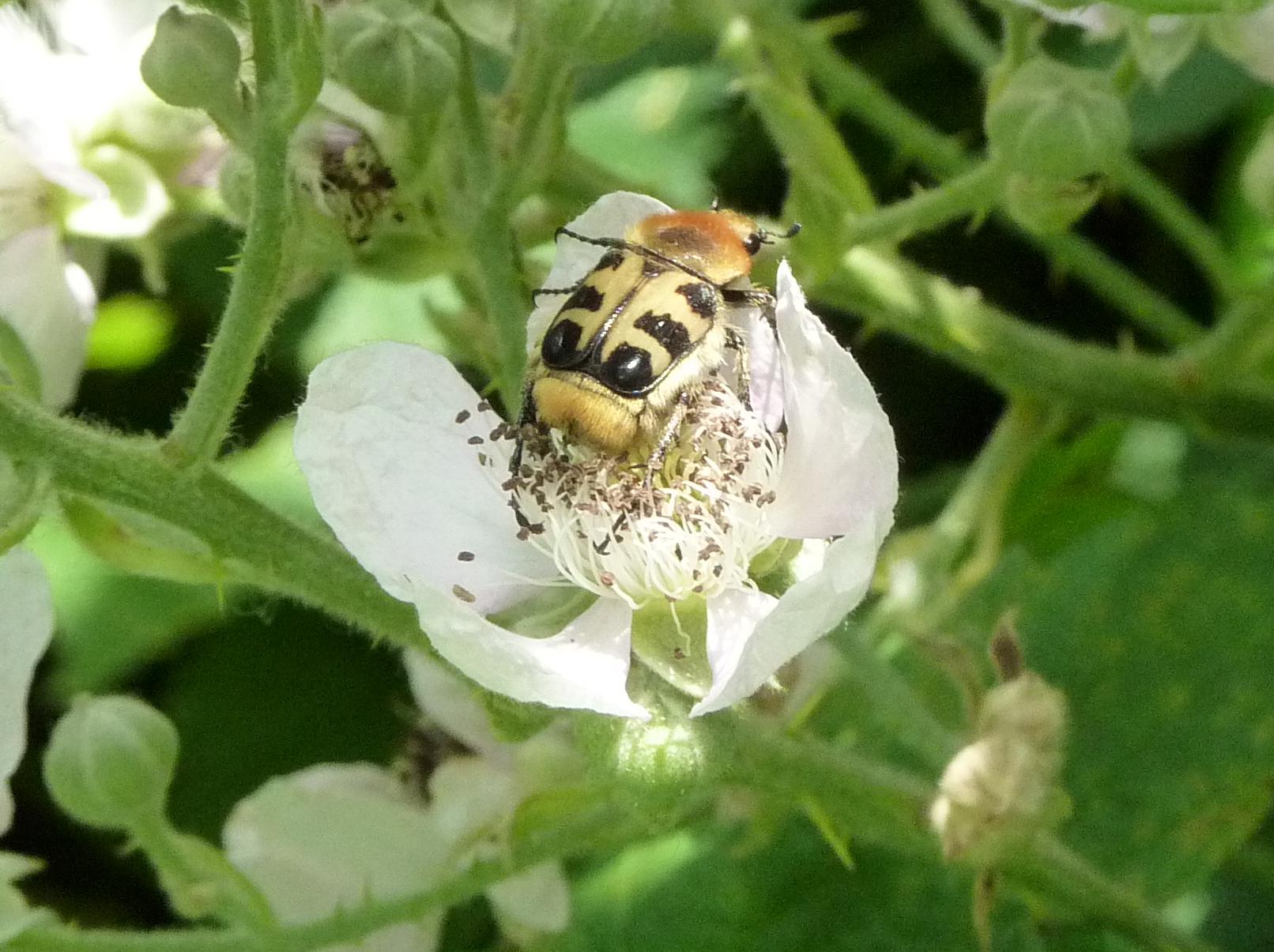
Trichius fasciatus

Didea fasciata

Eristalis arbustorum

Lycaena phlaesas

Syrphus ribesii
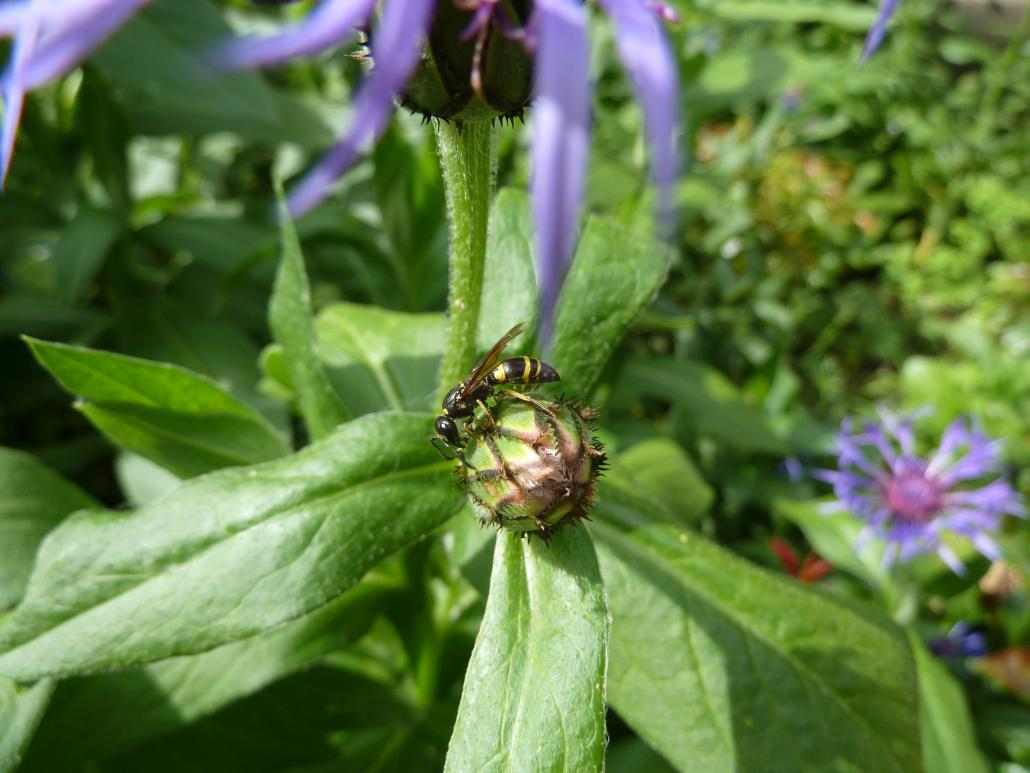
Spheciformes
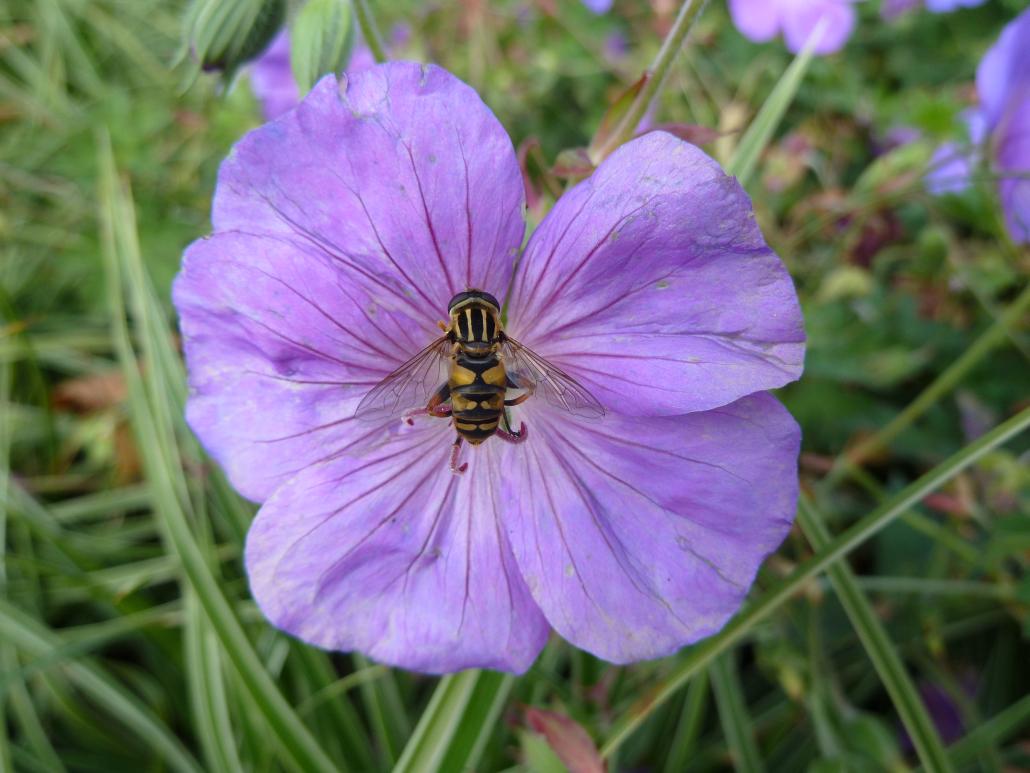
Helophilus pendulus
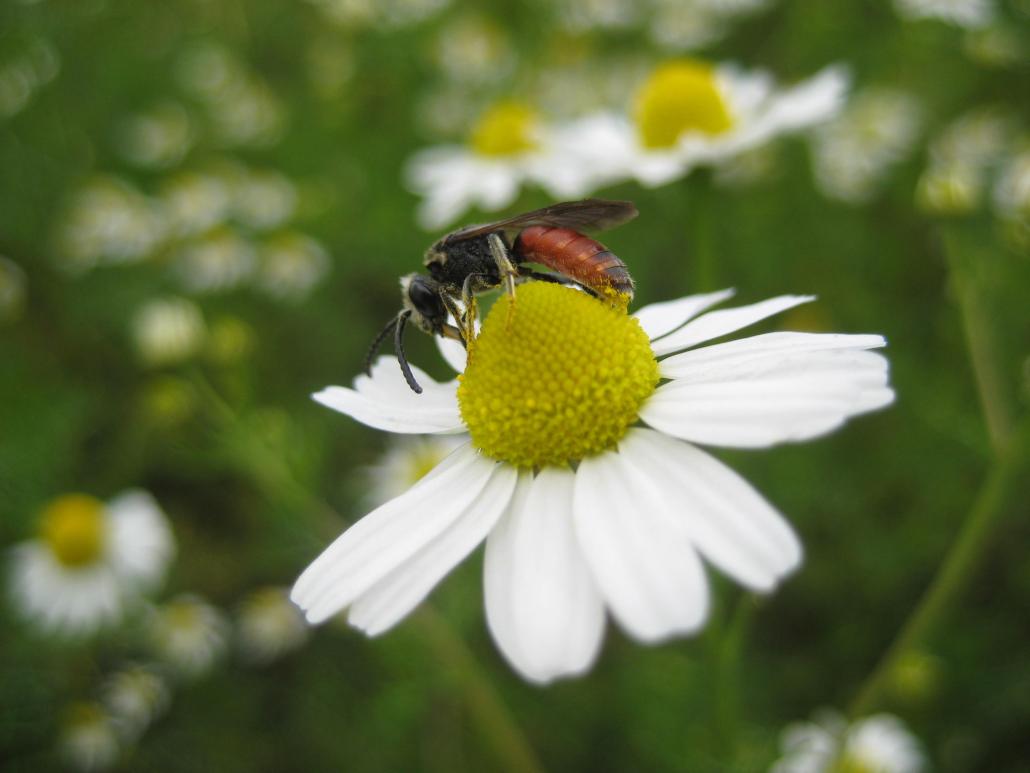
Nomada fabriciana
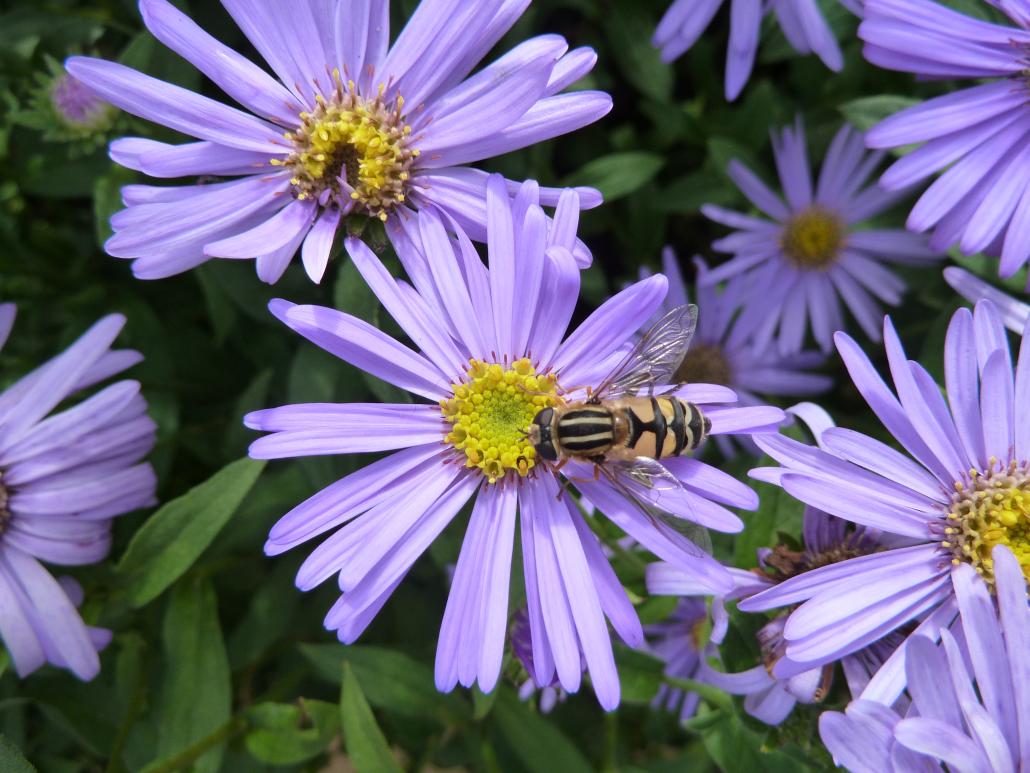
Helophilus trivittatus

Tenthredo campestris
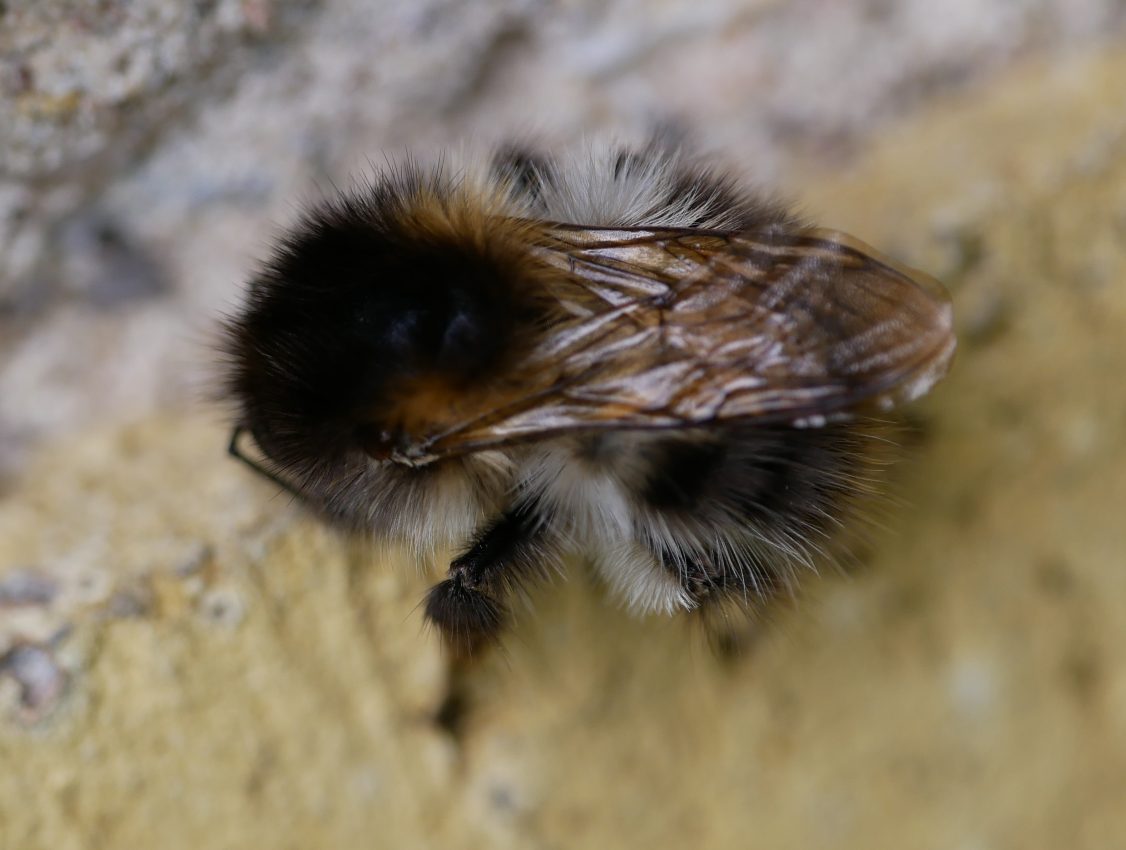
Bombus humilis

Myopa buccata
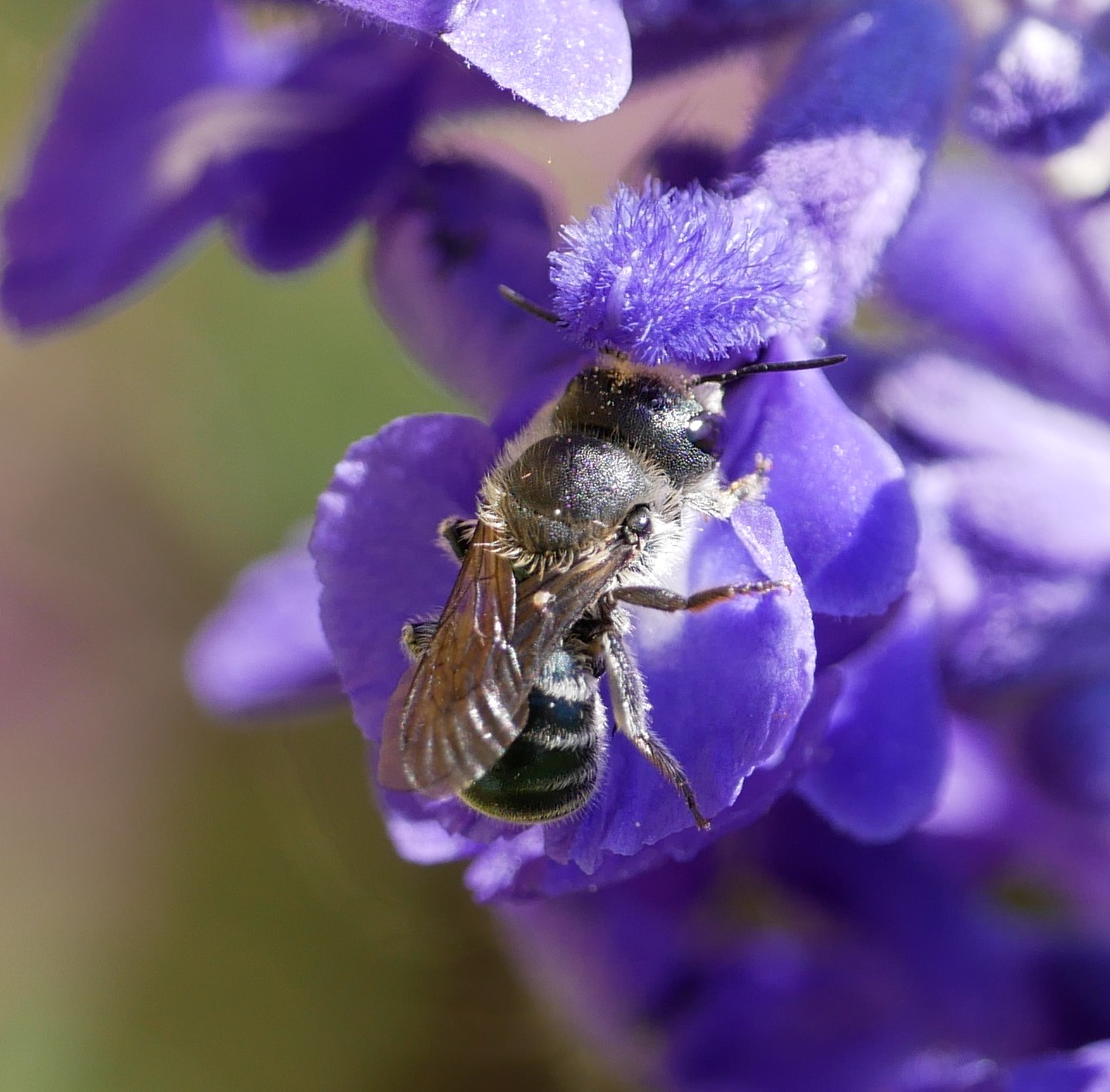
Osmia caerulescens
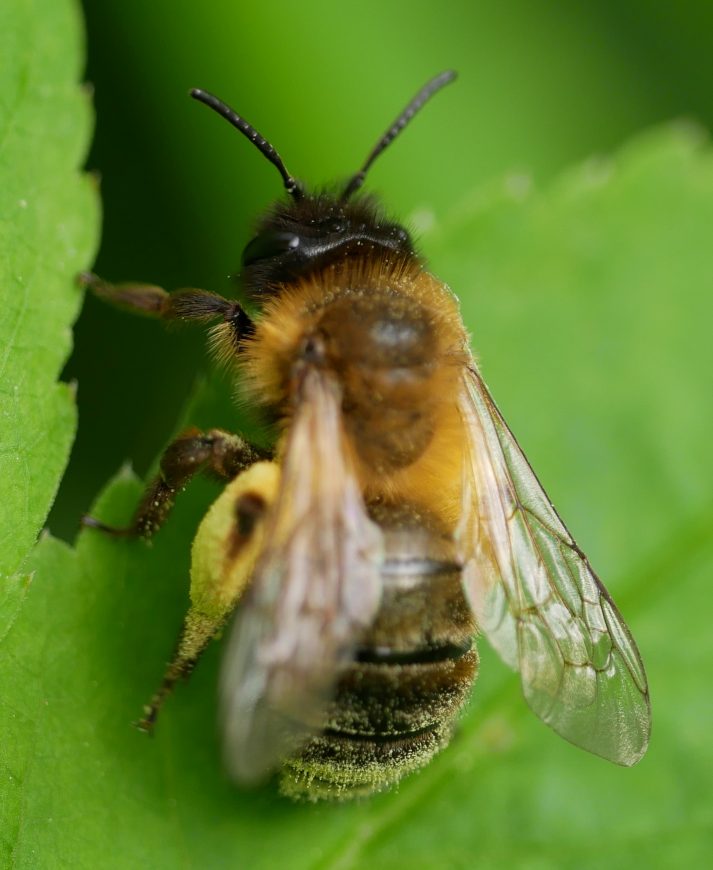
Adrena biocolor
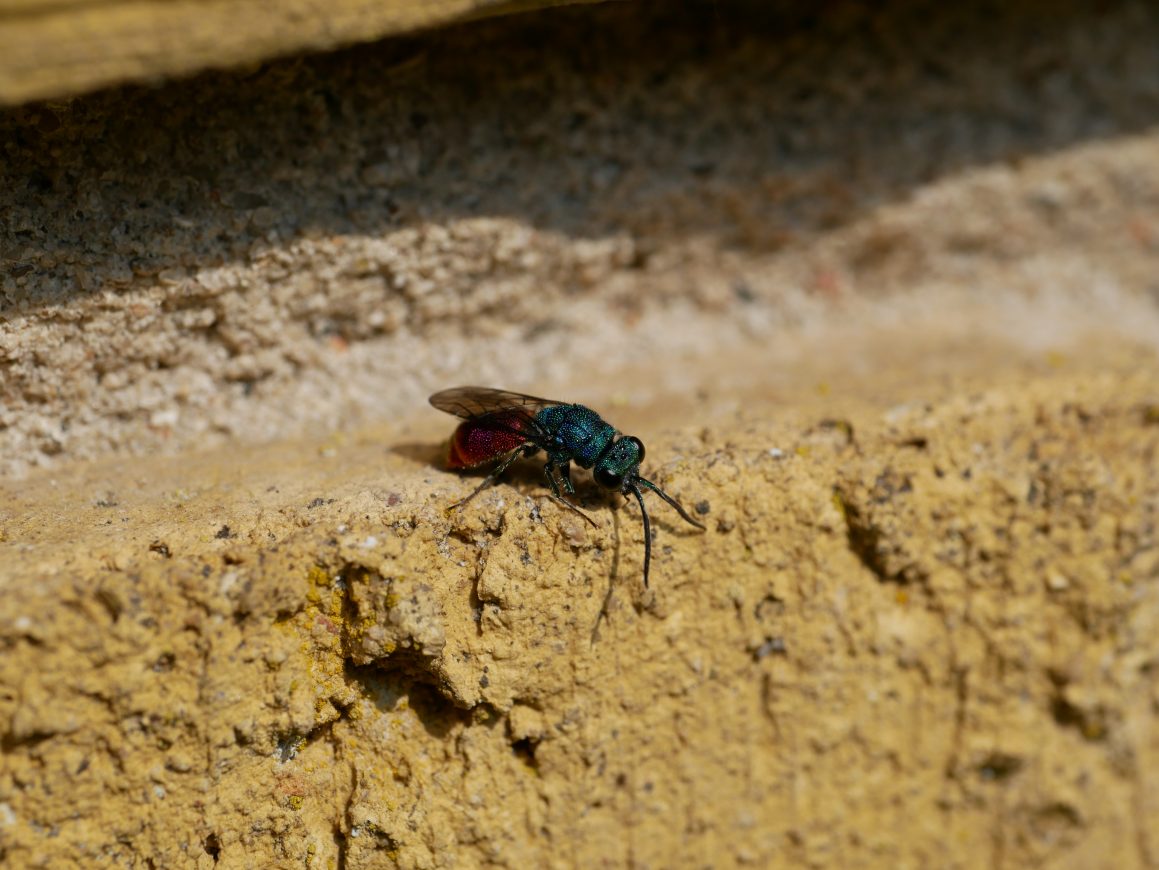
Chrysis fulgida
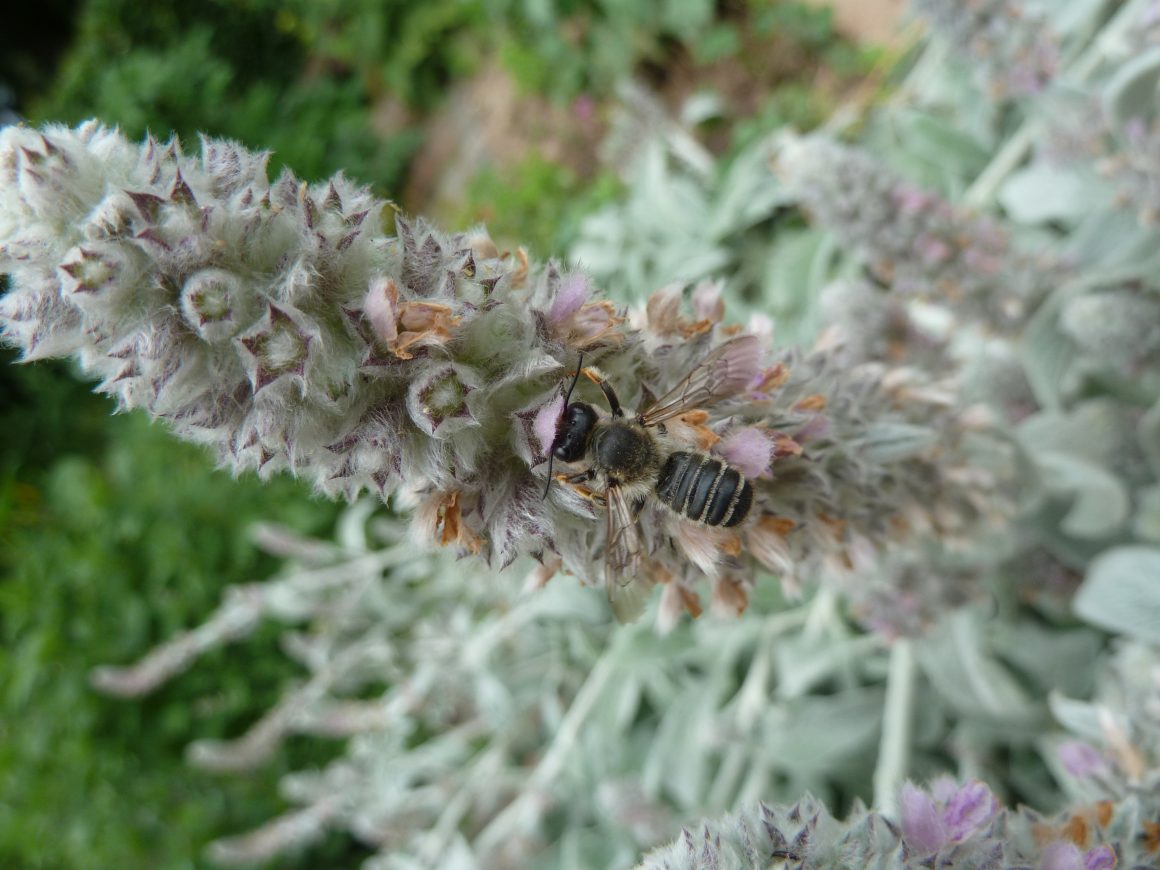
Megachile willughbiella
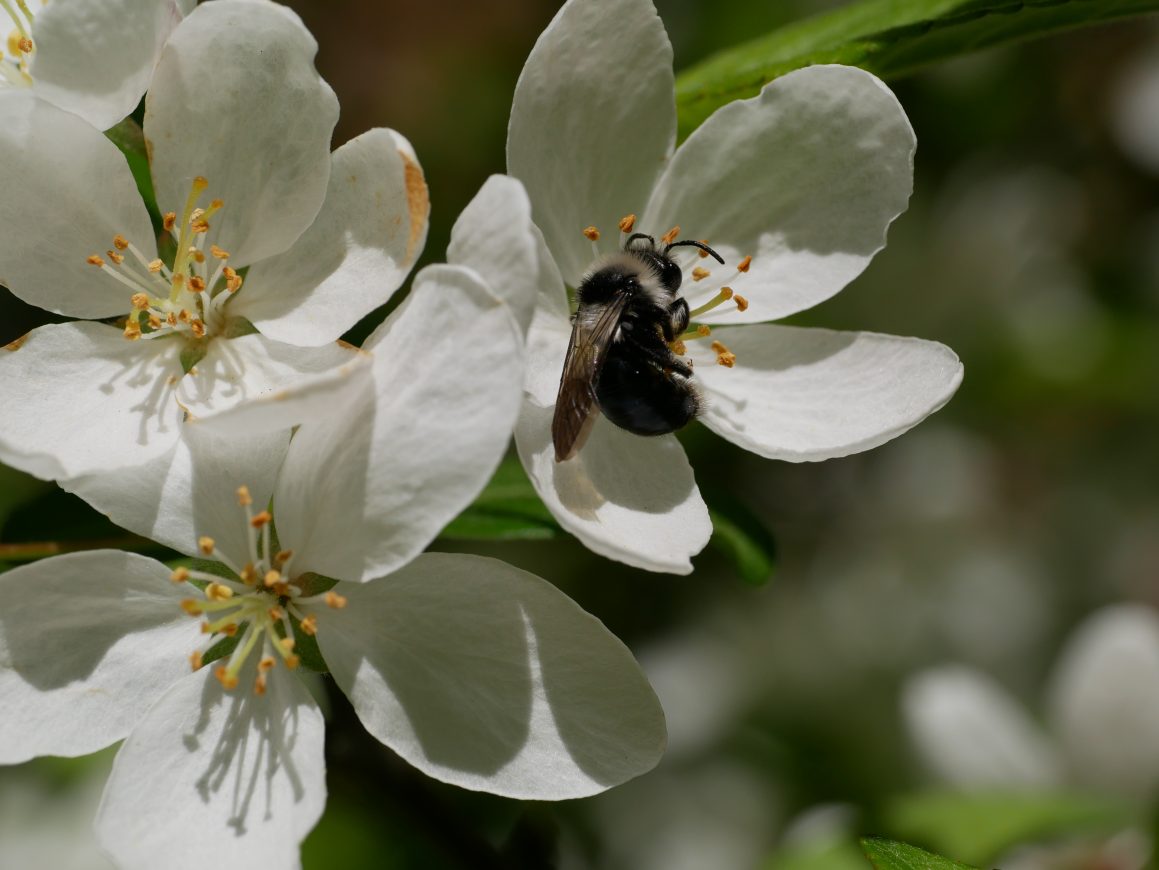
Andrena cineraria
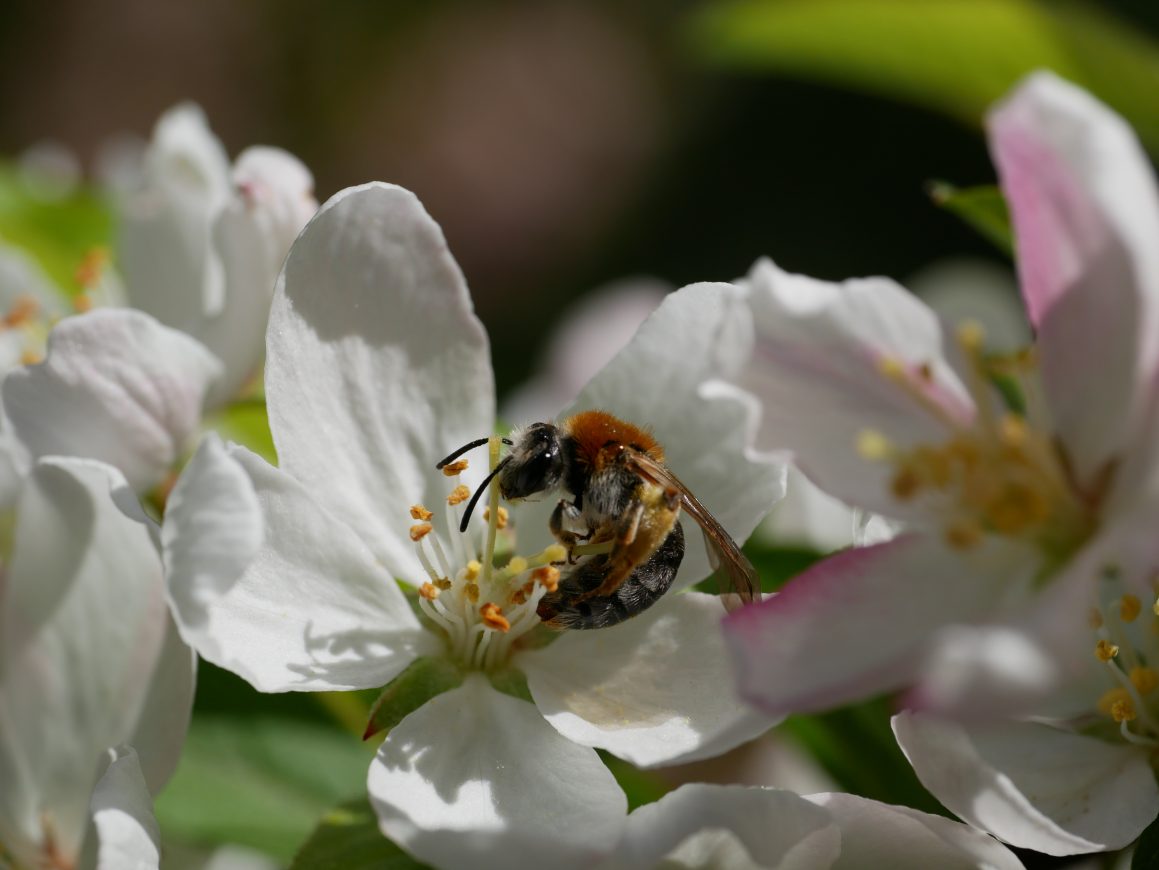
Andrena haemorrhoa
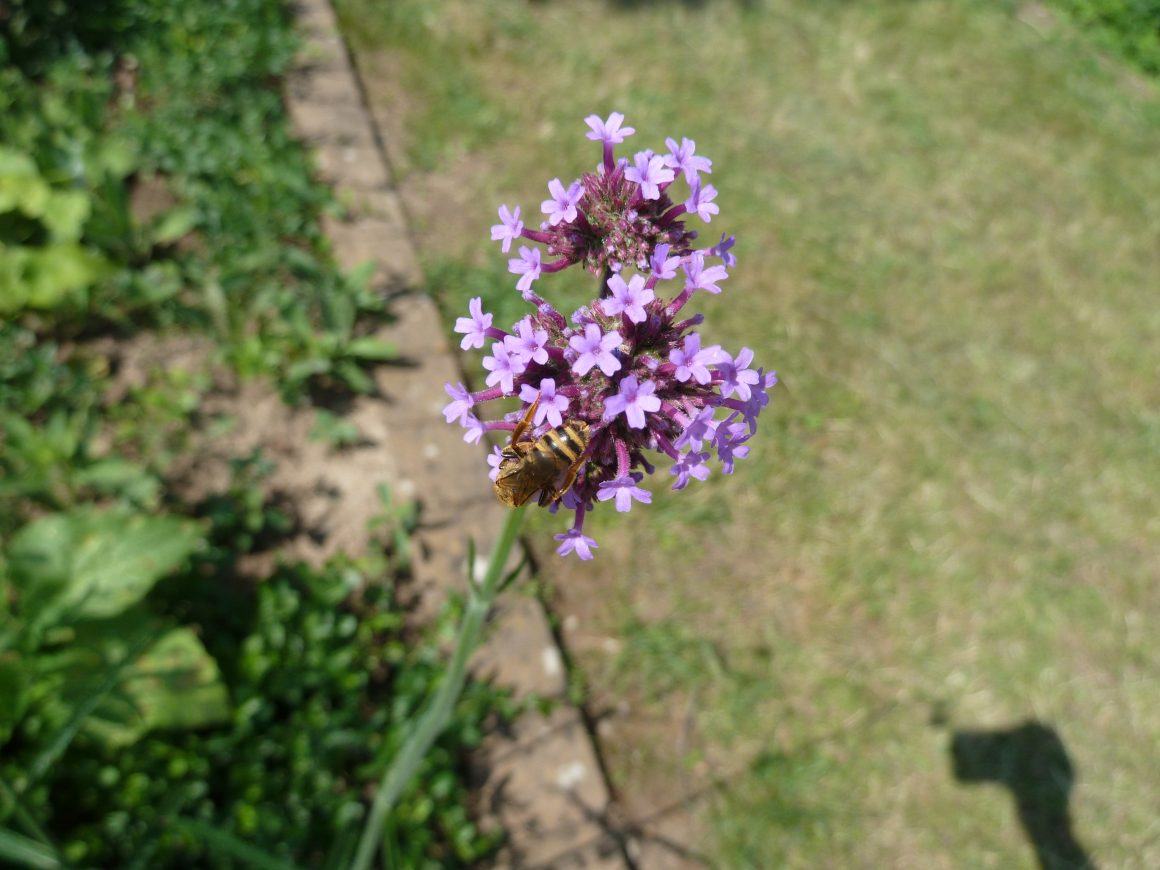
Halictus scabiosae
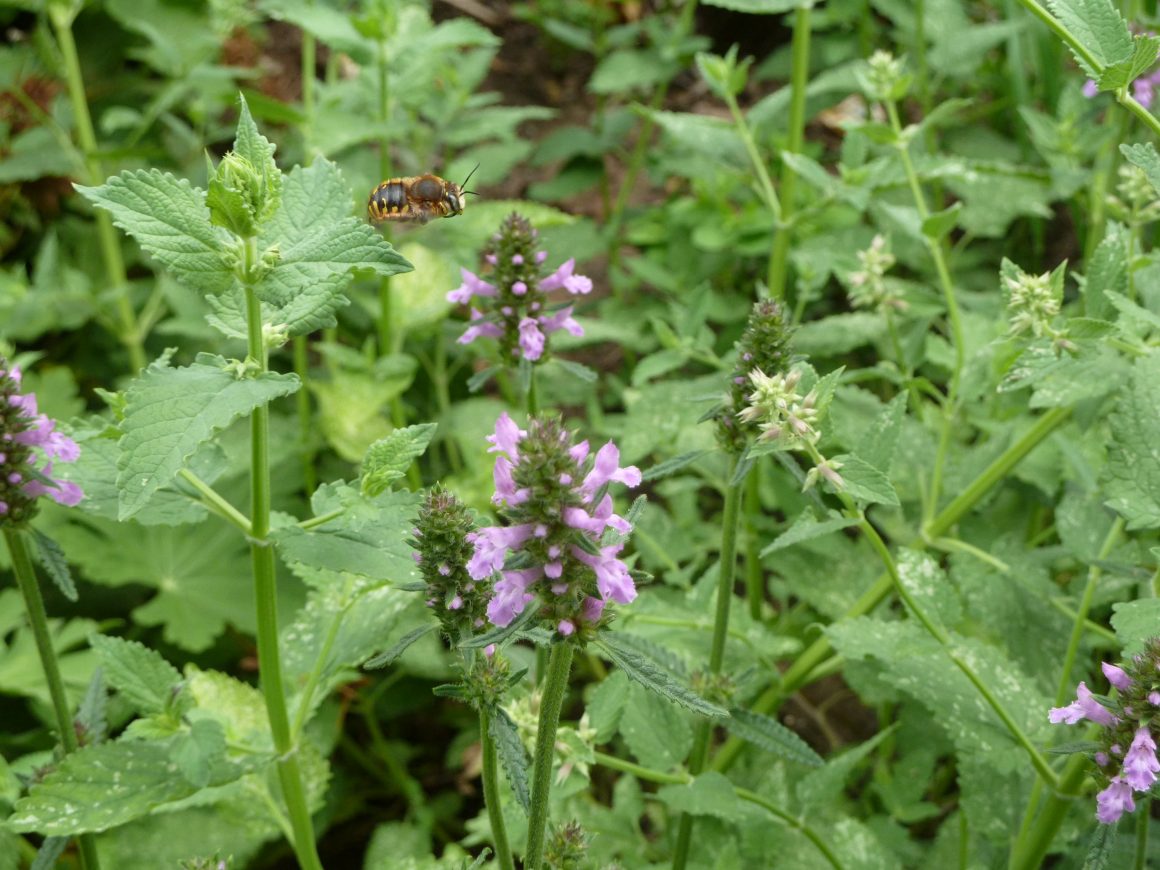
Anthidum manicatum
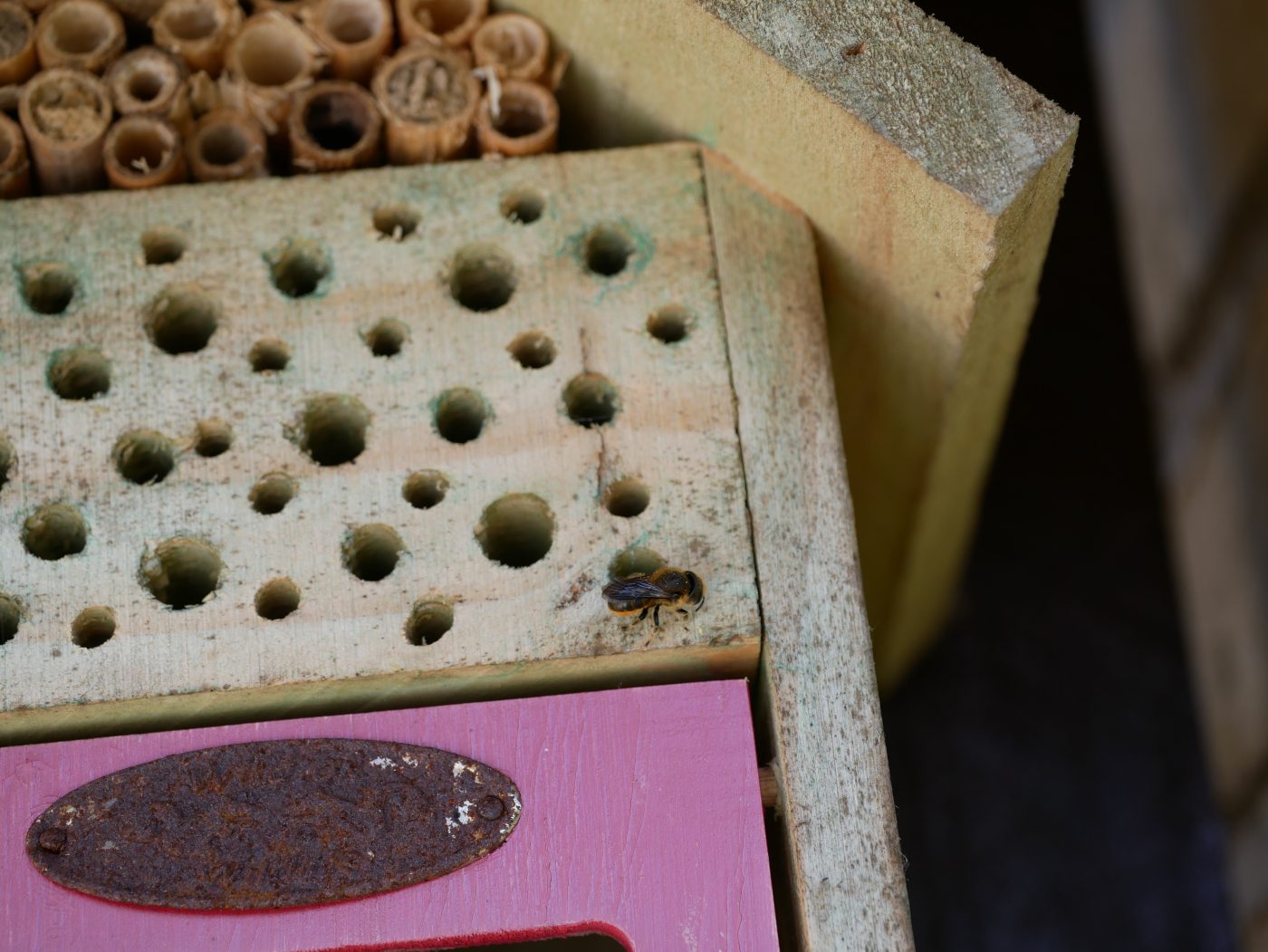
Osmia bicornis
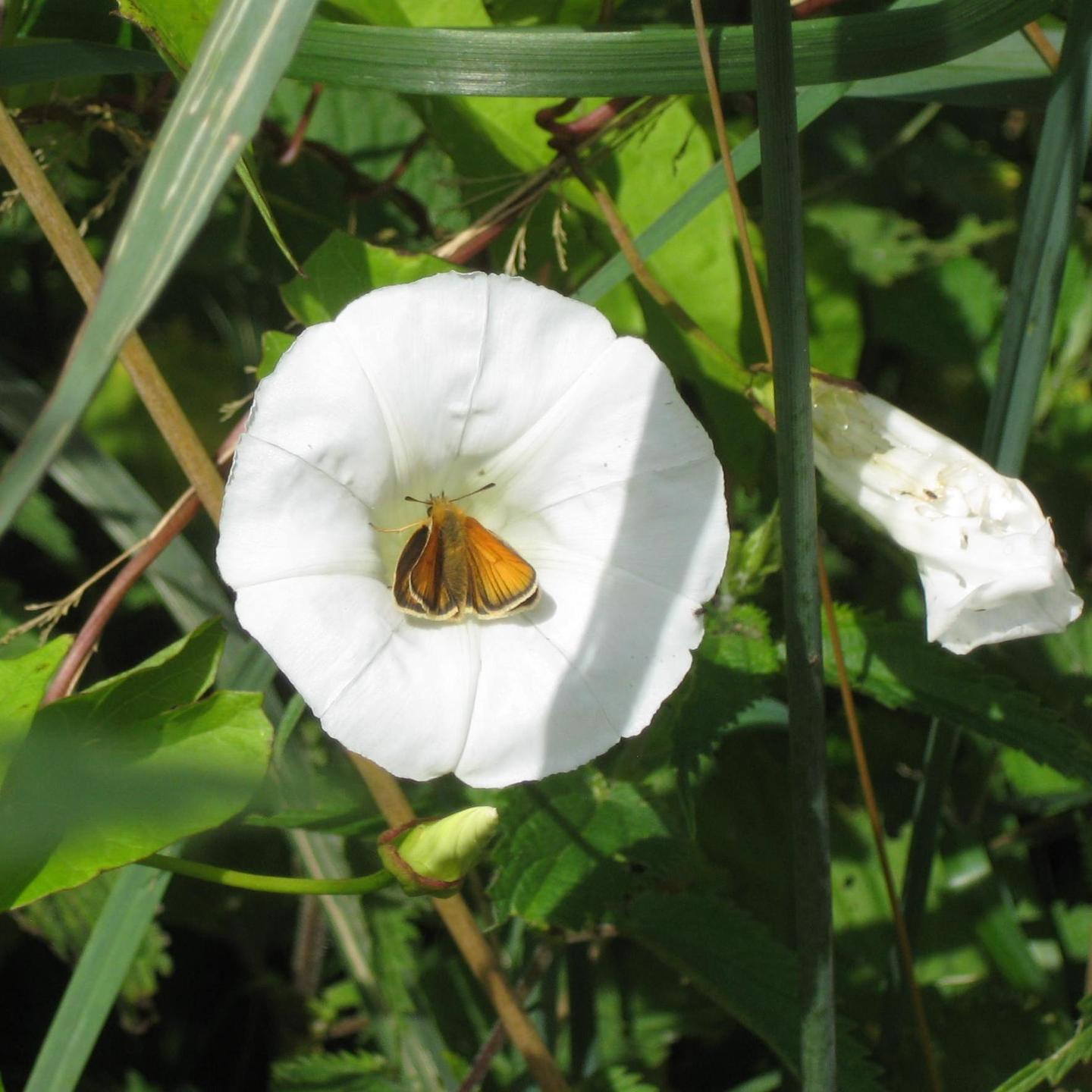
Heteropterus morpheus
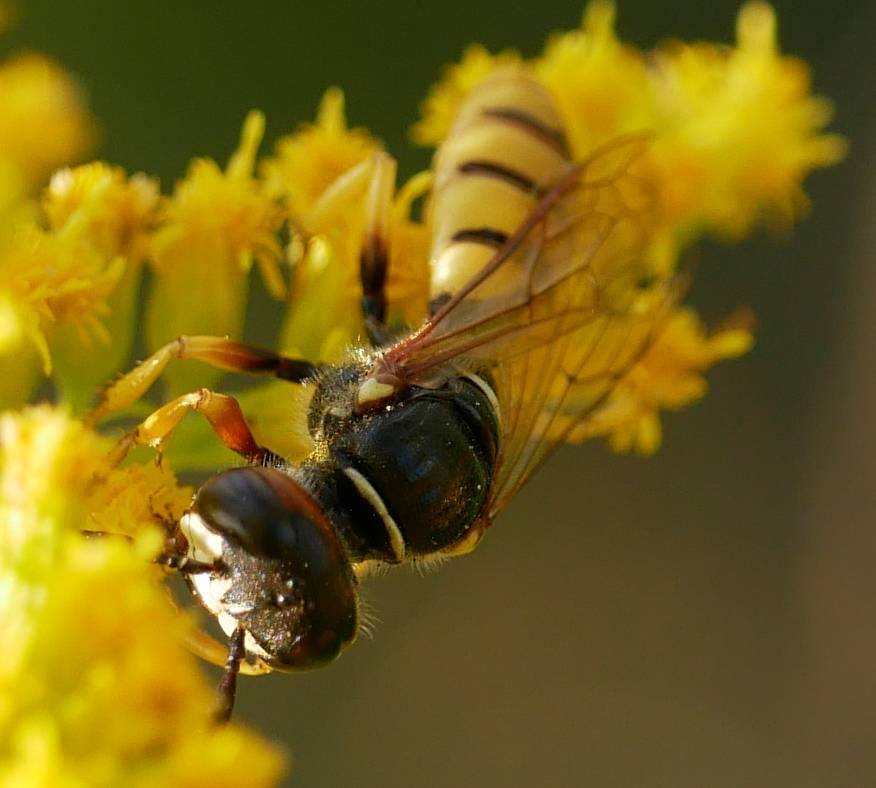
Philanthus triangulum

Aglais io
Identification
This large diversity makes it difficult to determine the species of pollinator that just flew by or sat down on a flower in your garden. These links can help you to identify common insects:
- Buglife.org provides a general overview about different types of pollinators and pictures of some common bees, wasps, hoverflies and beetles
- The Bumblebee Conservation Trust goes into more detail about bumblebee species that are domestic in UK
- Find out about common bee species in Denmark under vildebier.dk
- If you can’t find any information about a specific type of pollinator online, try to contact your local beekeeper association{:}

